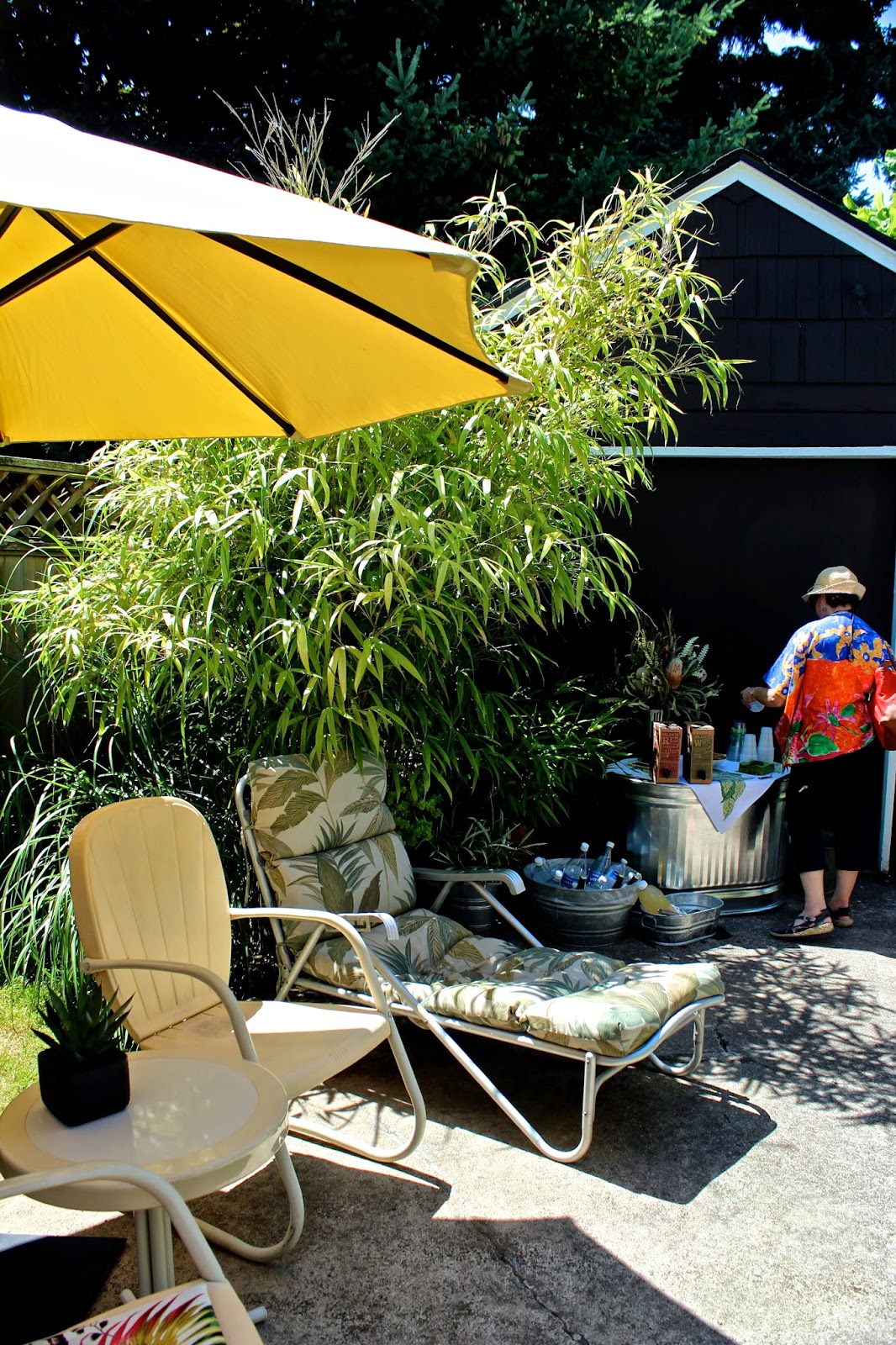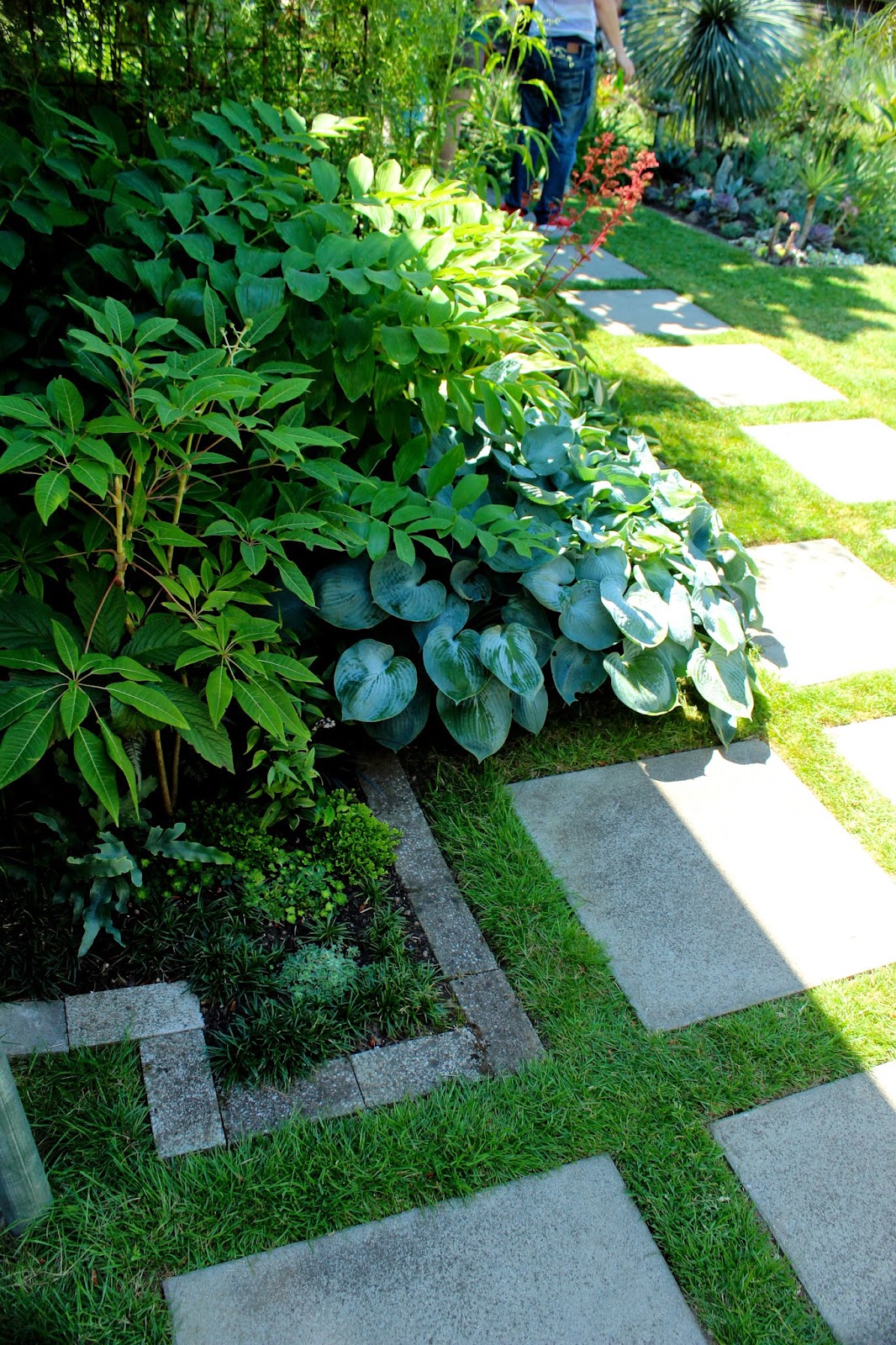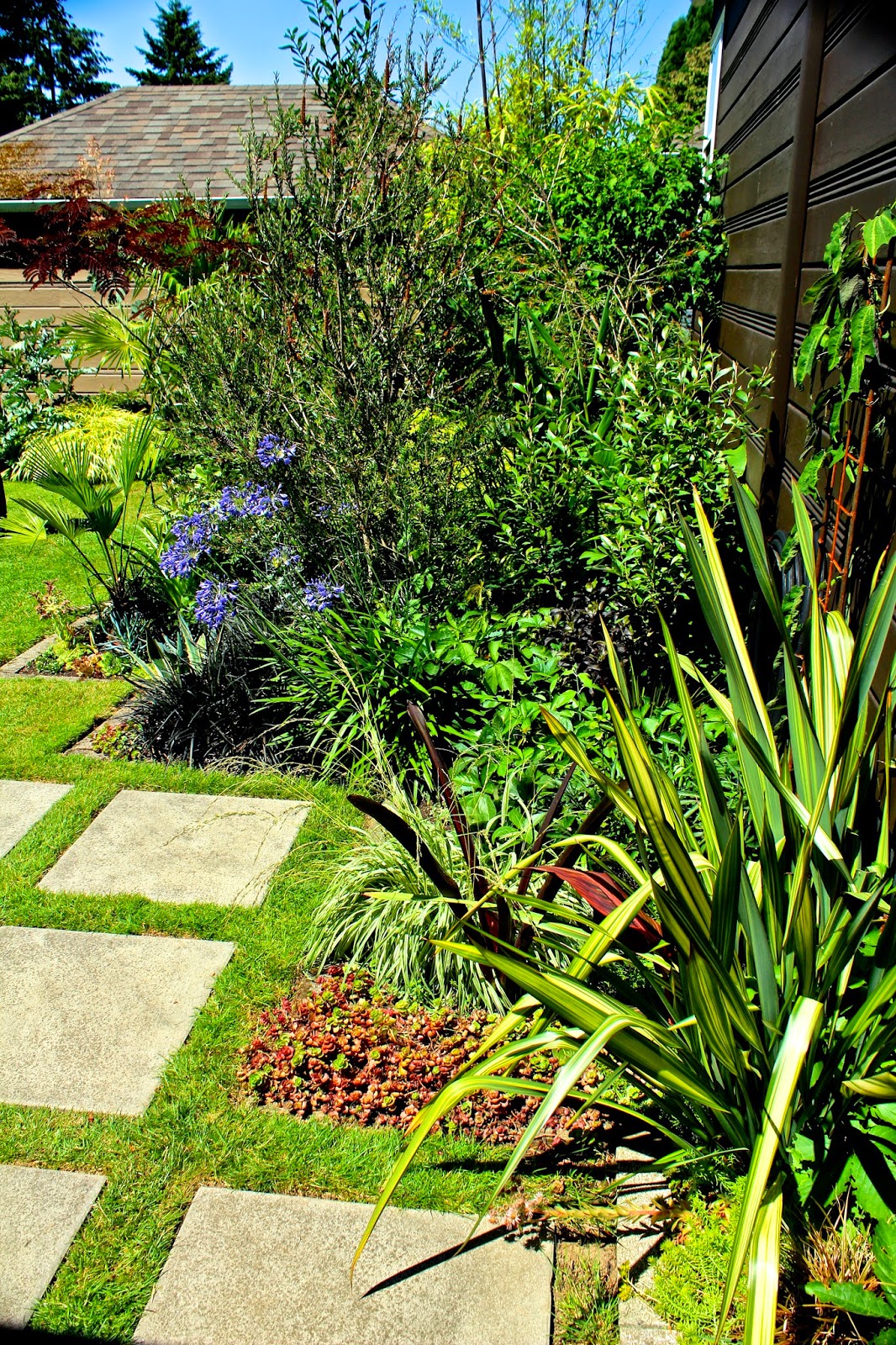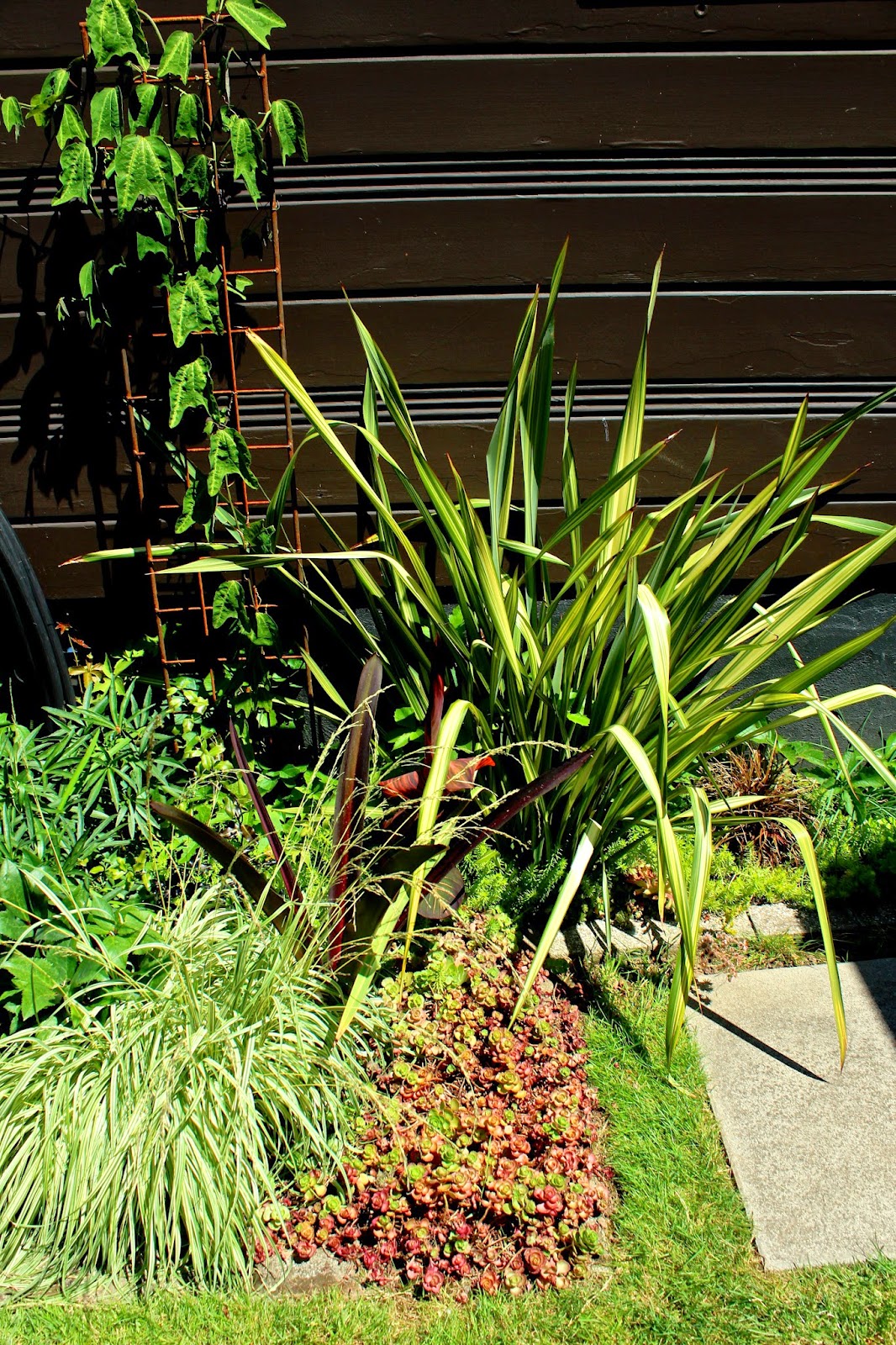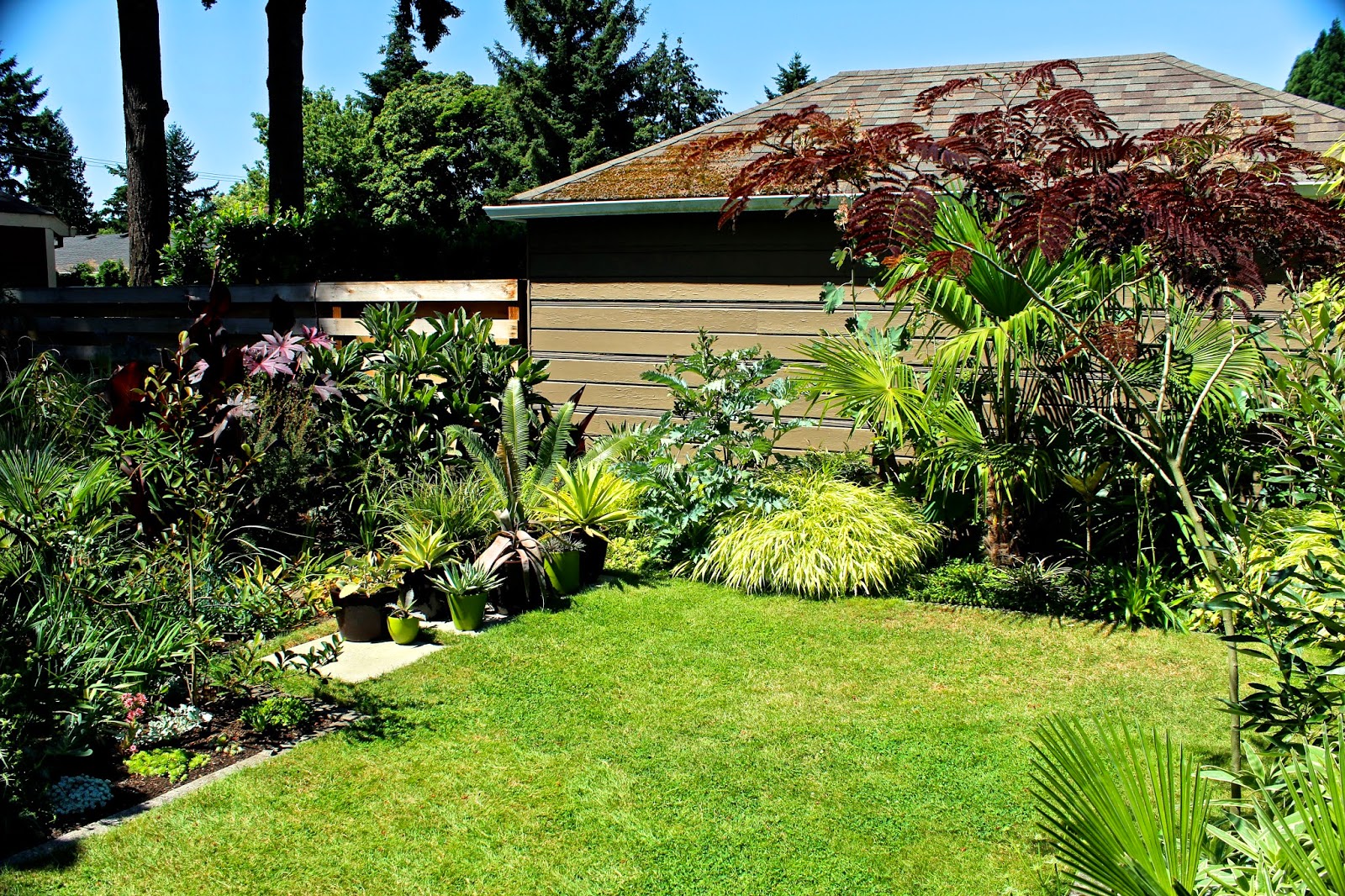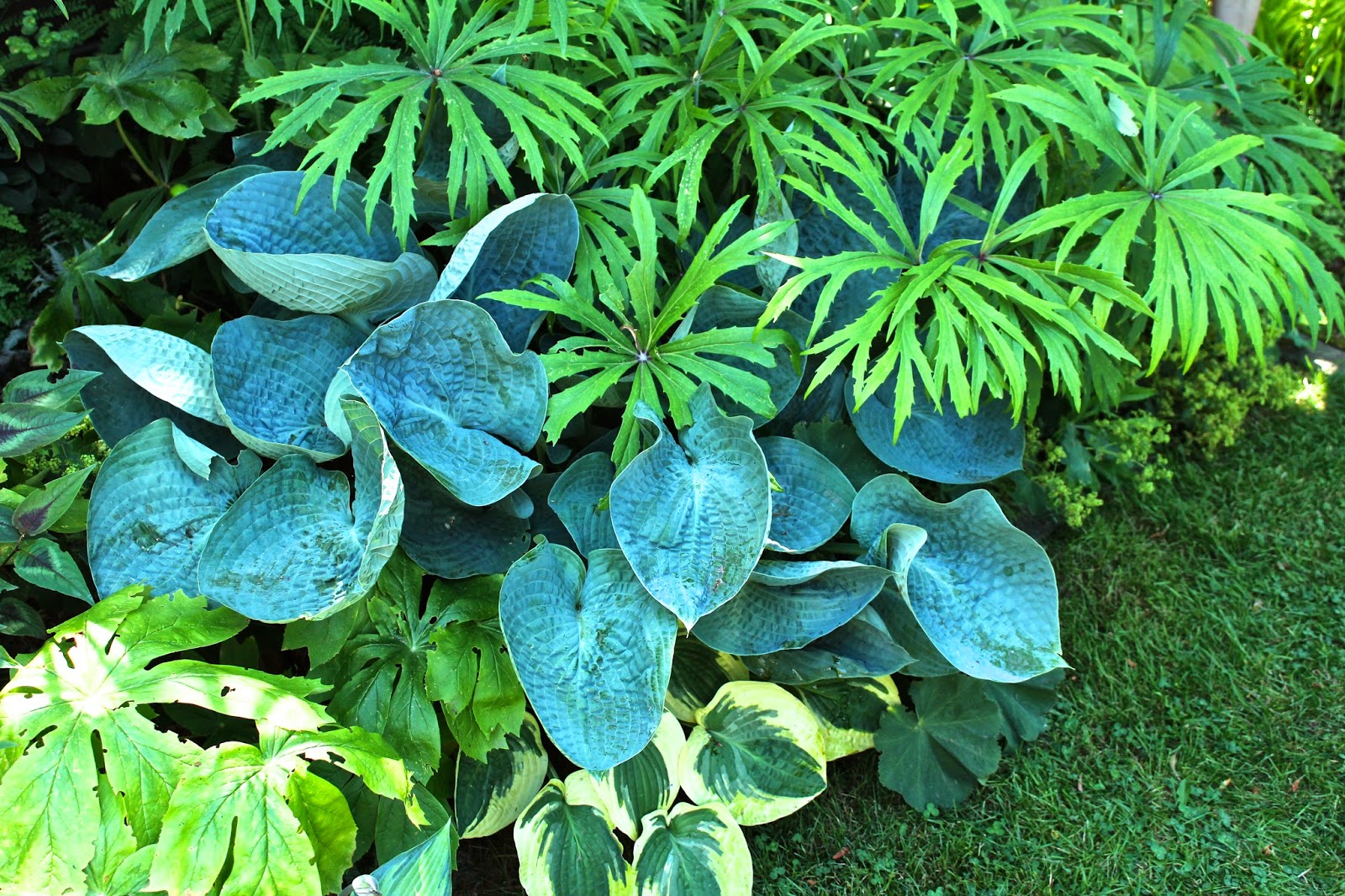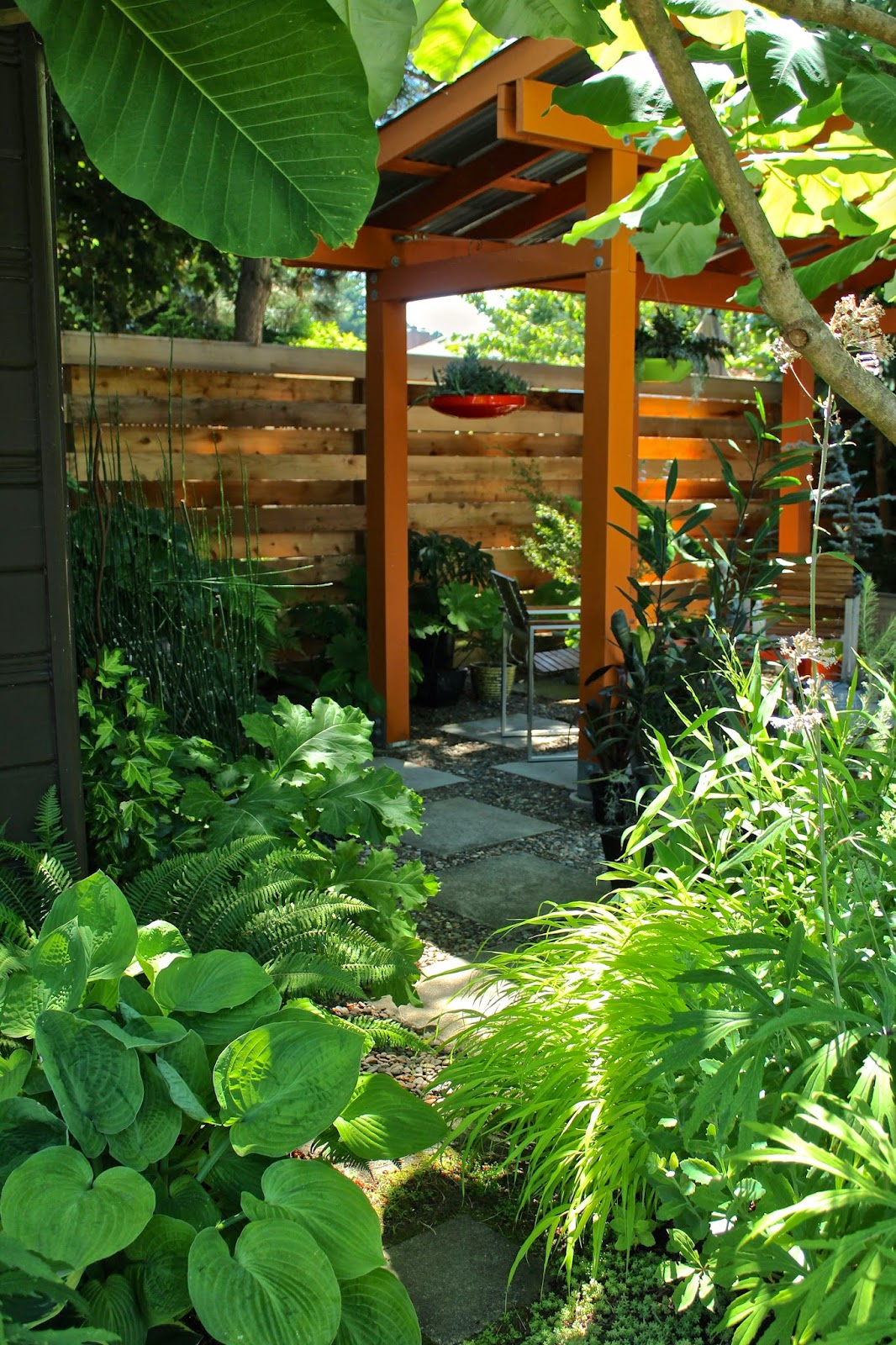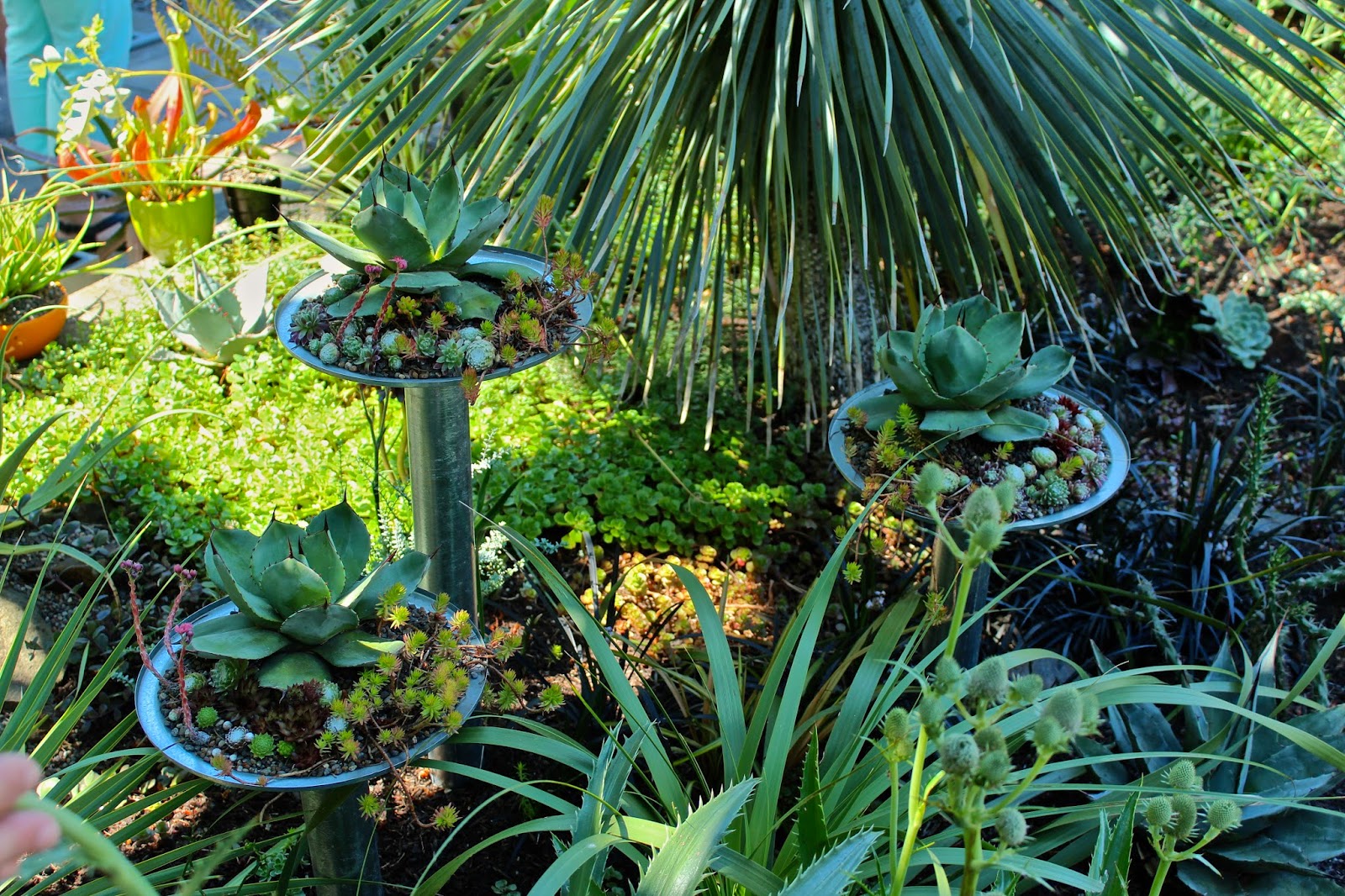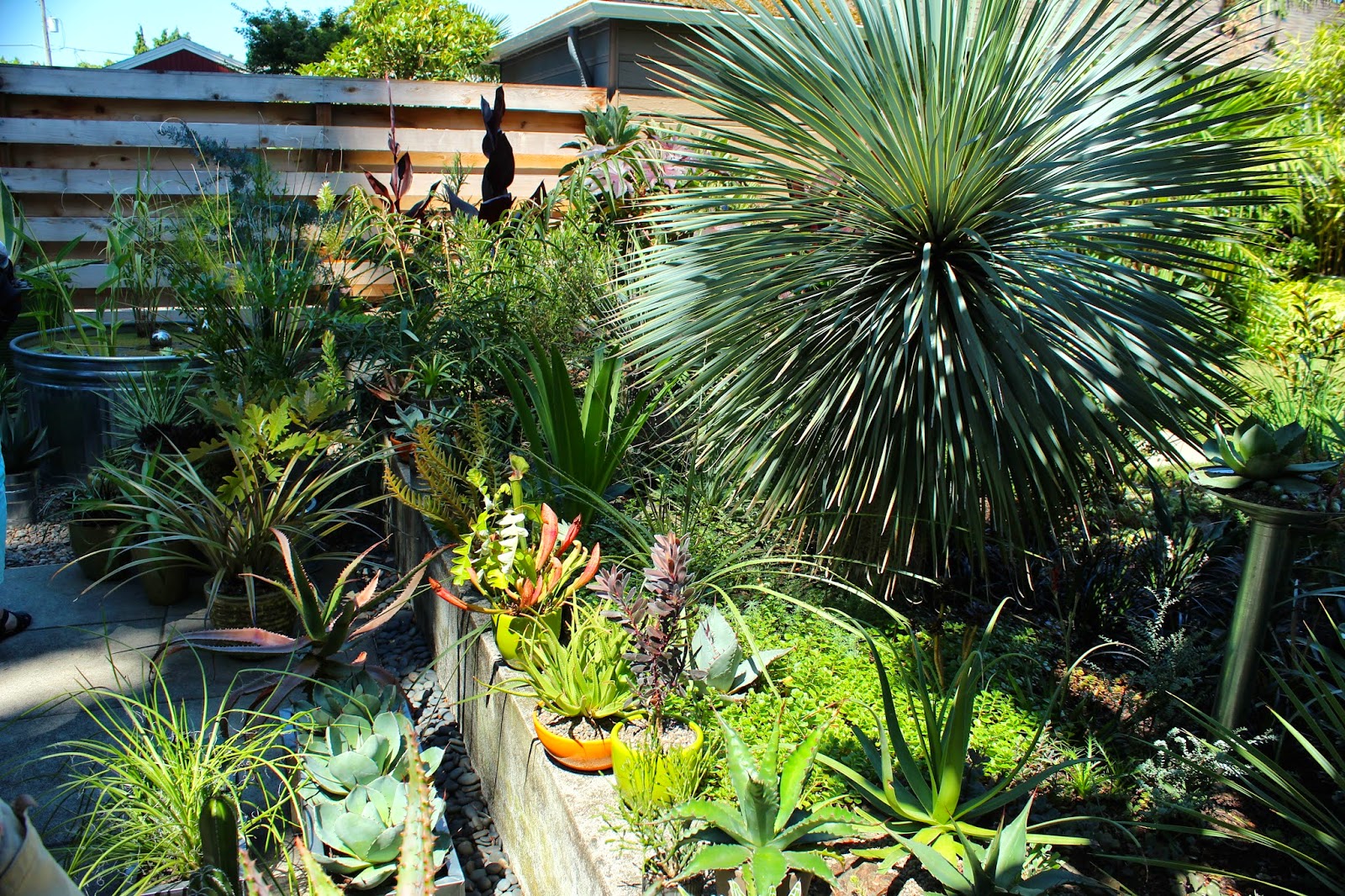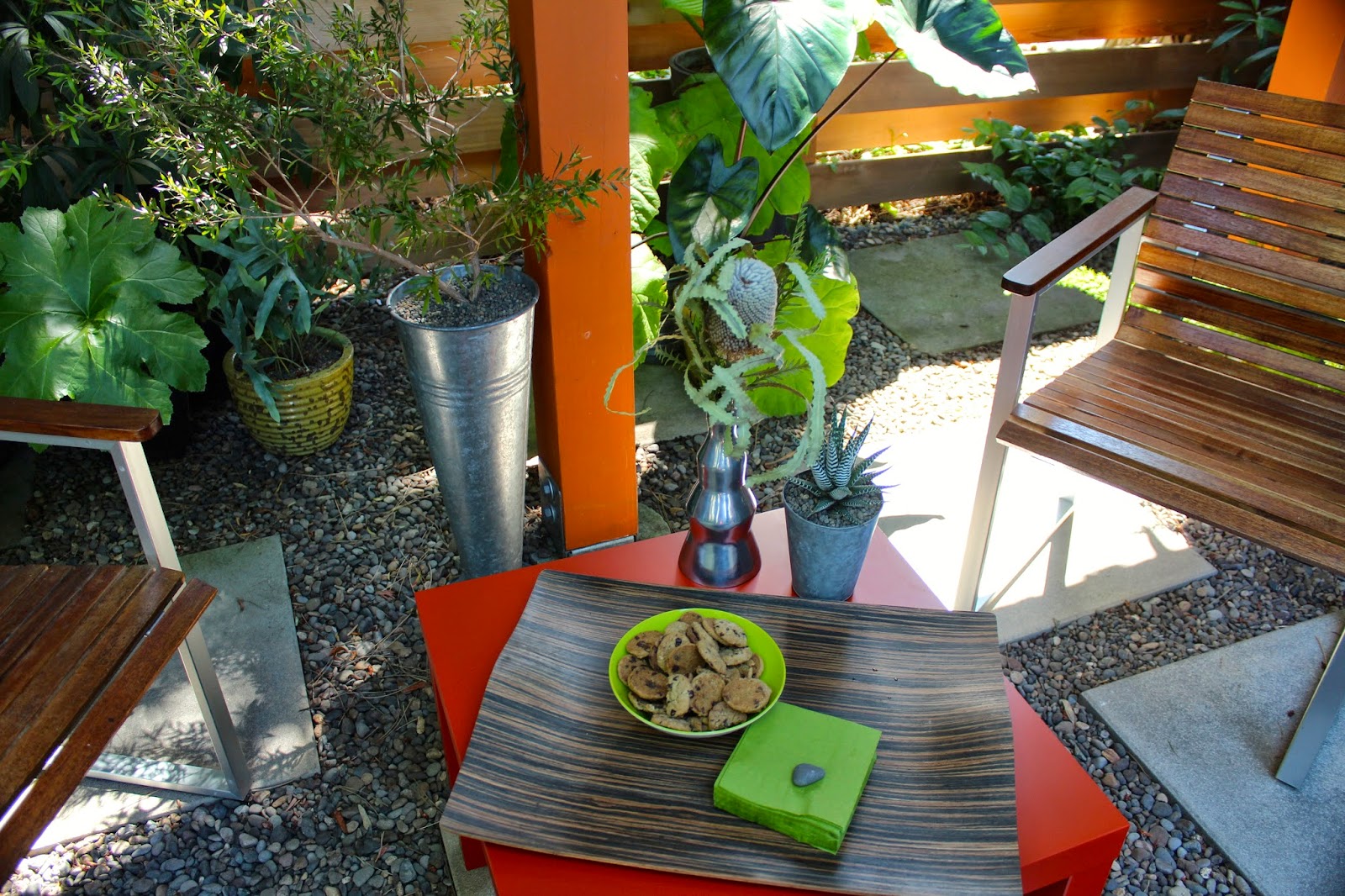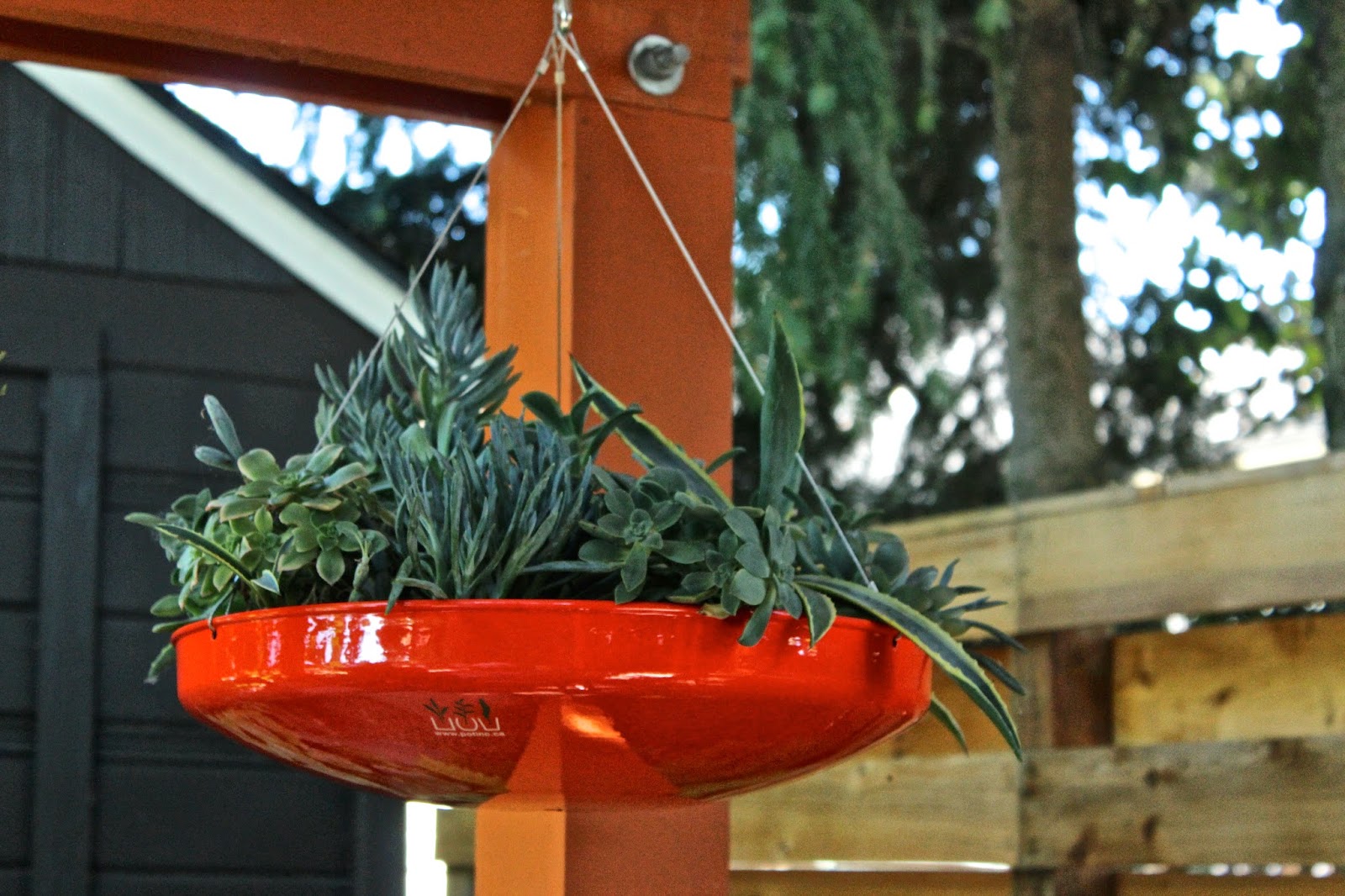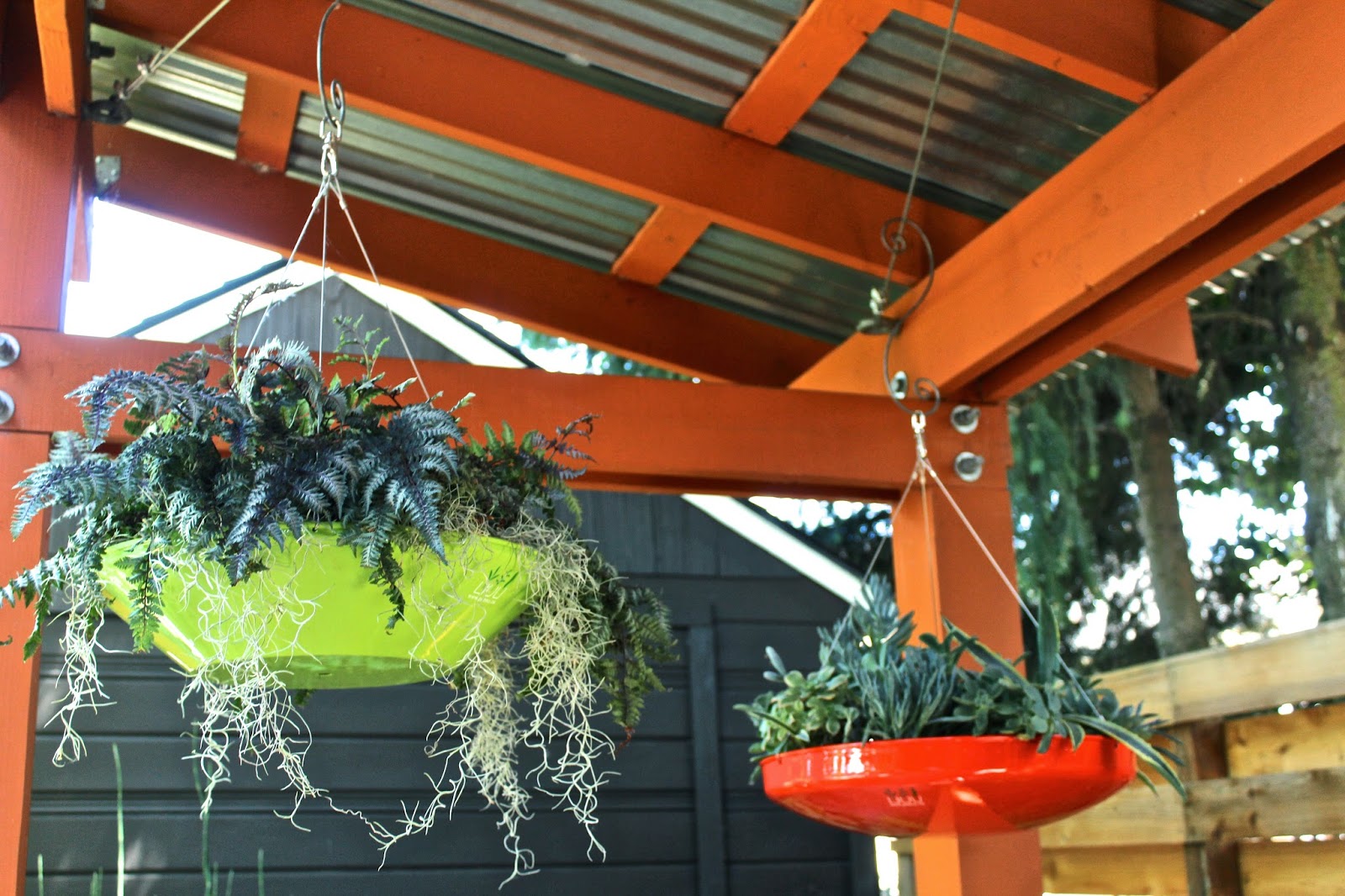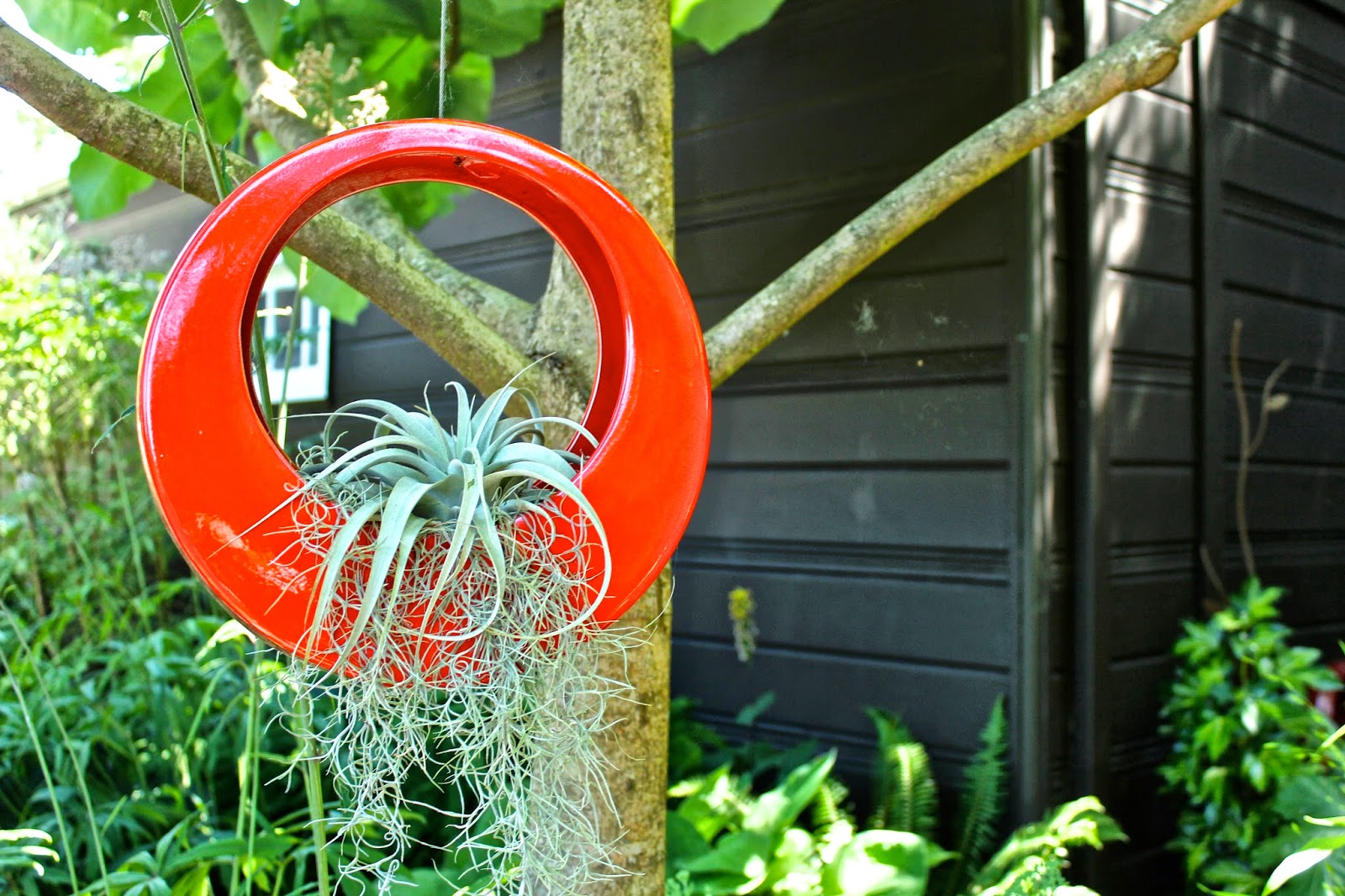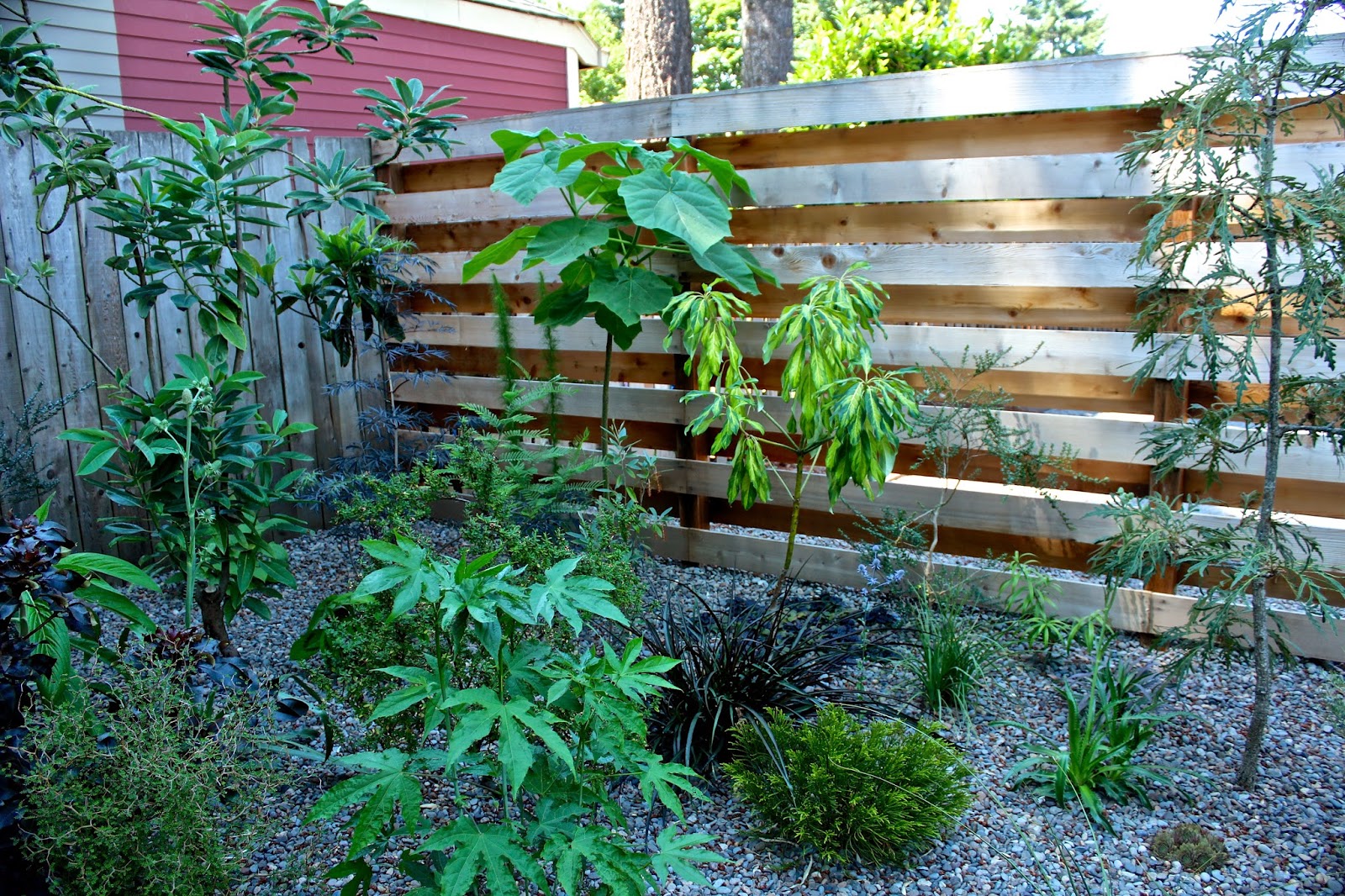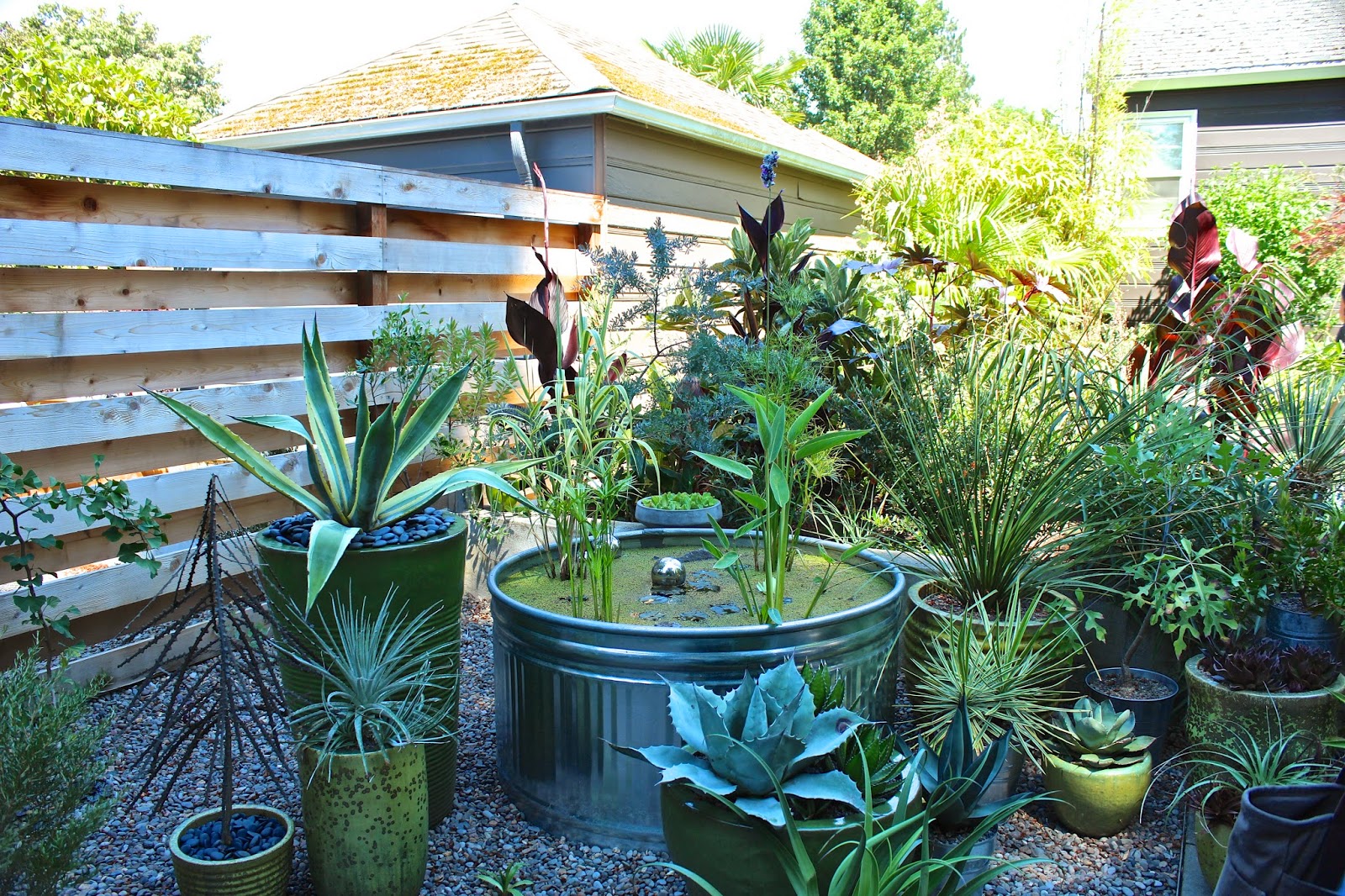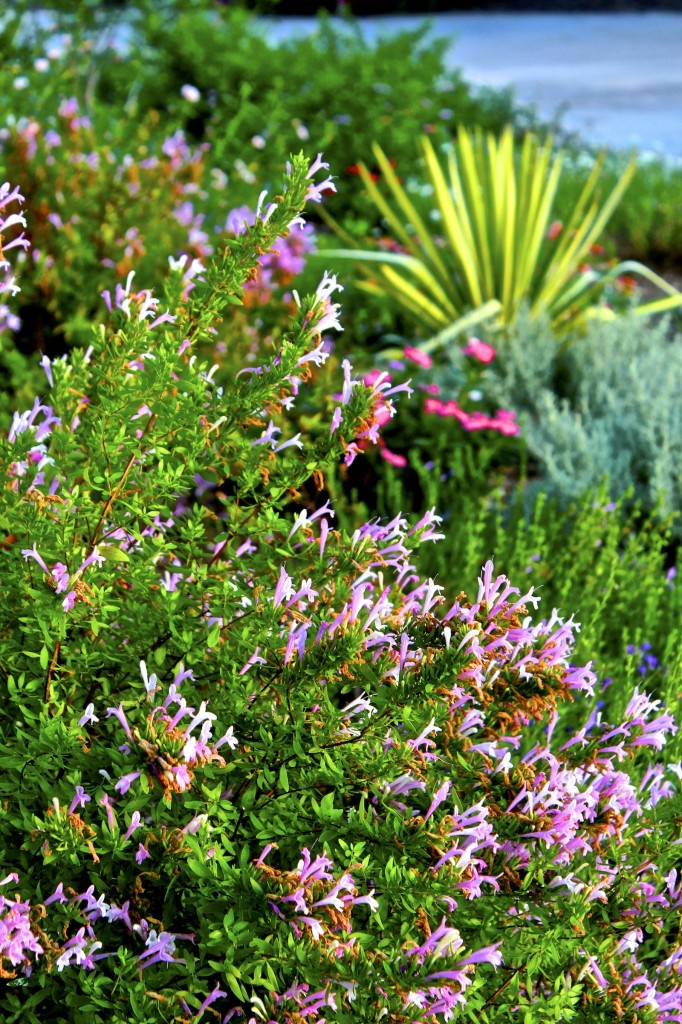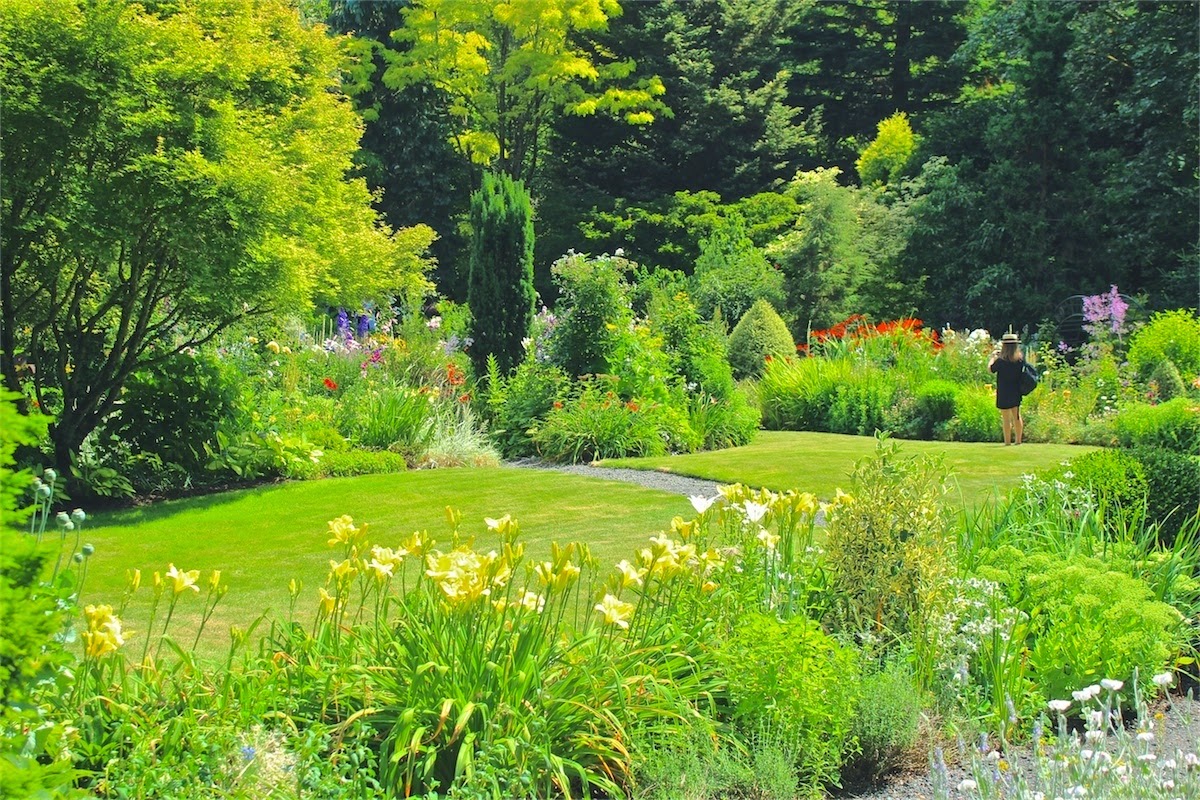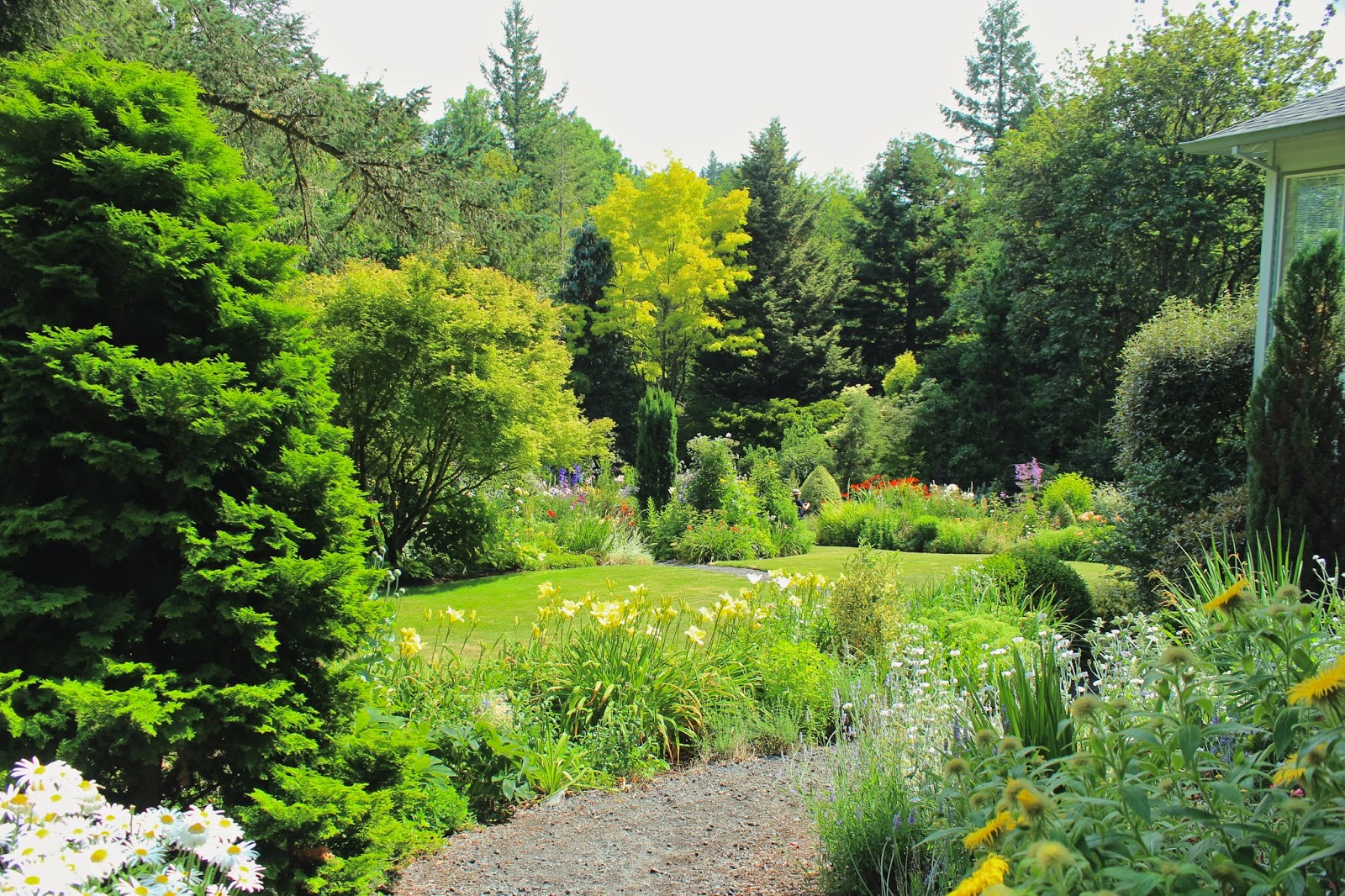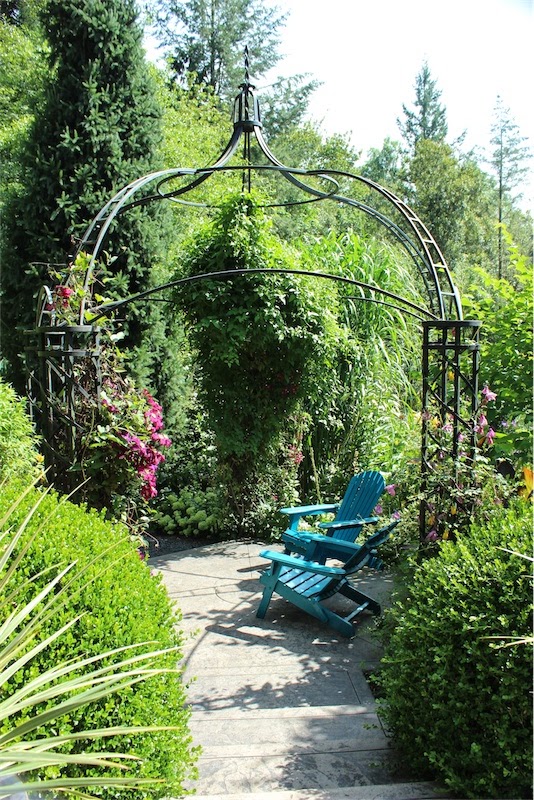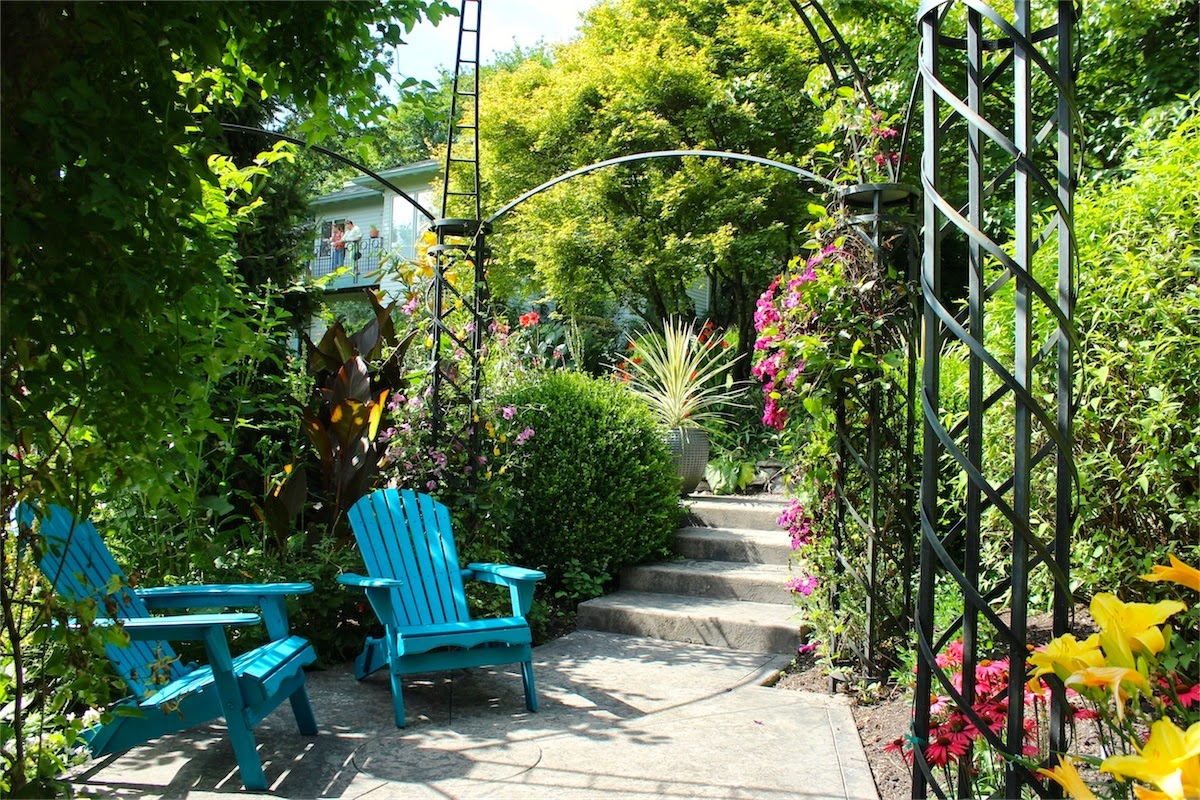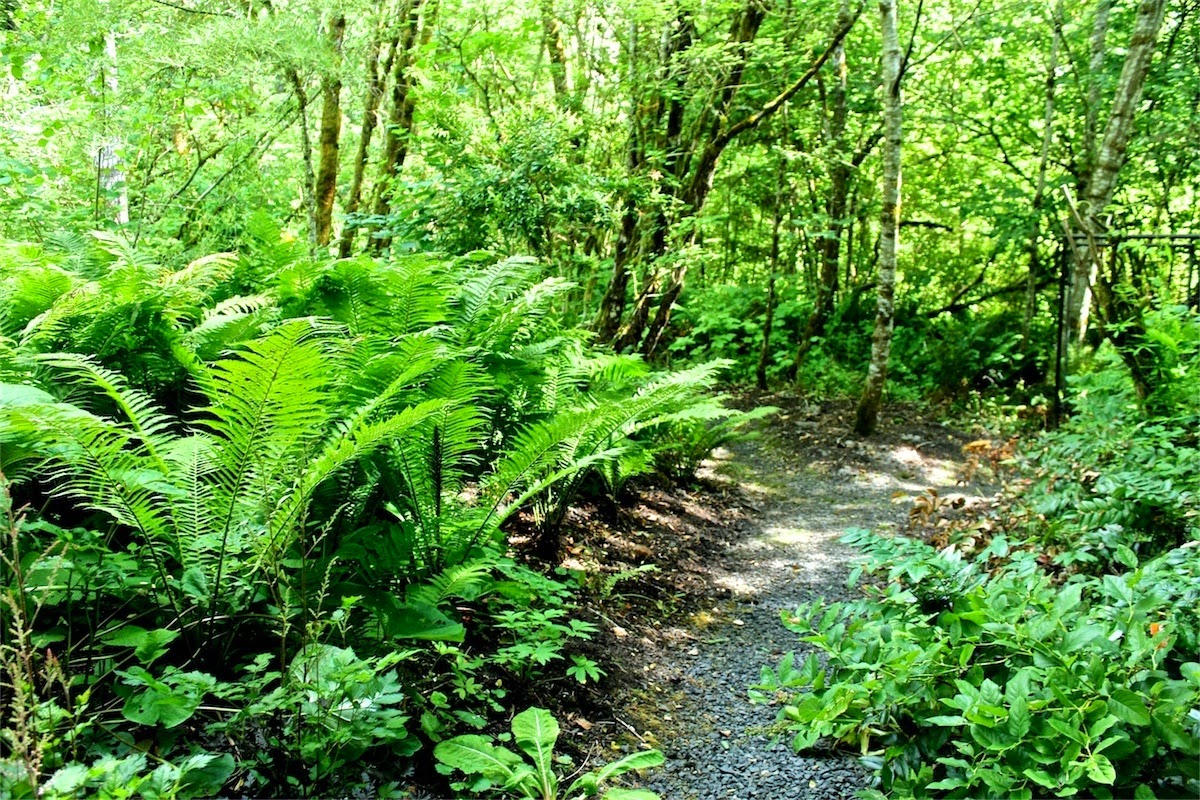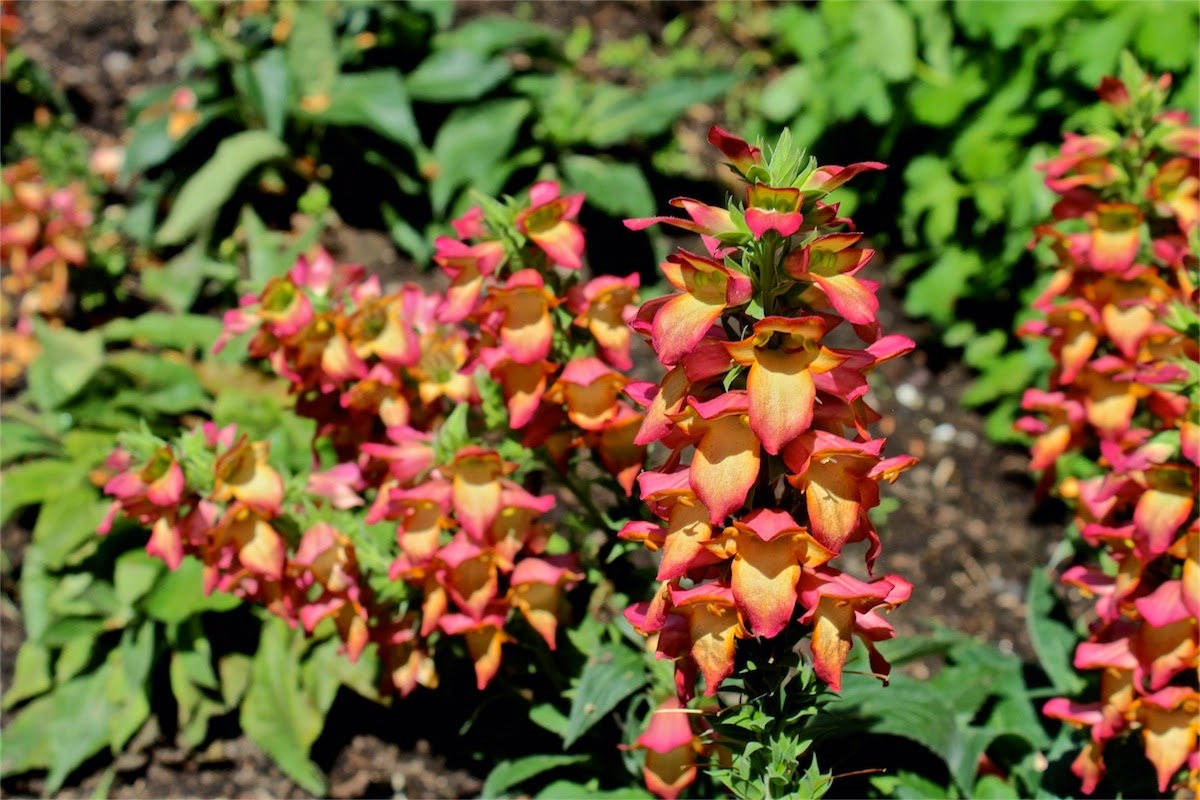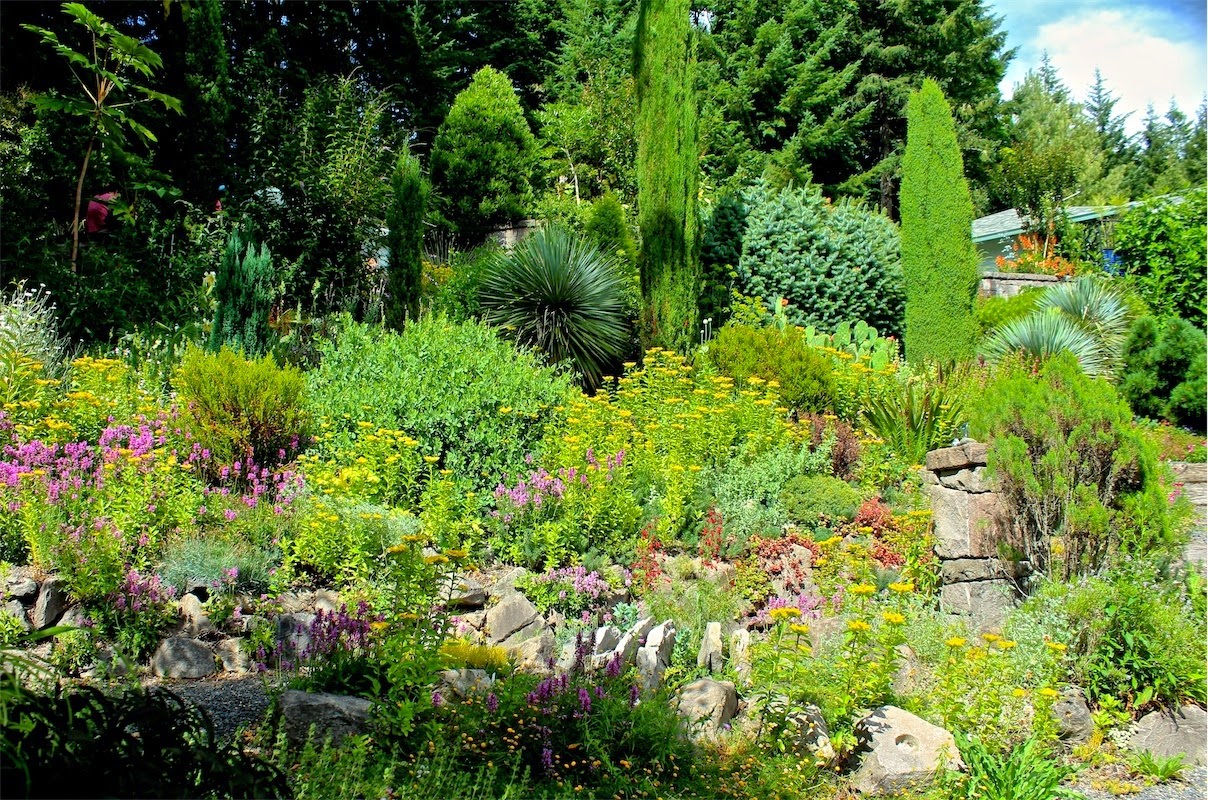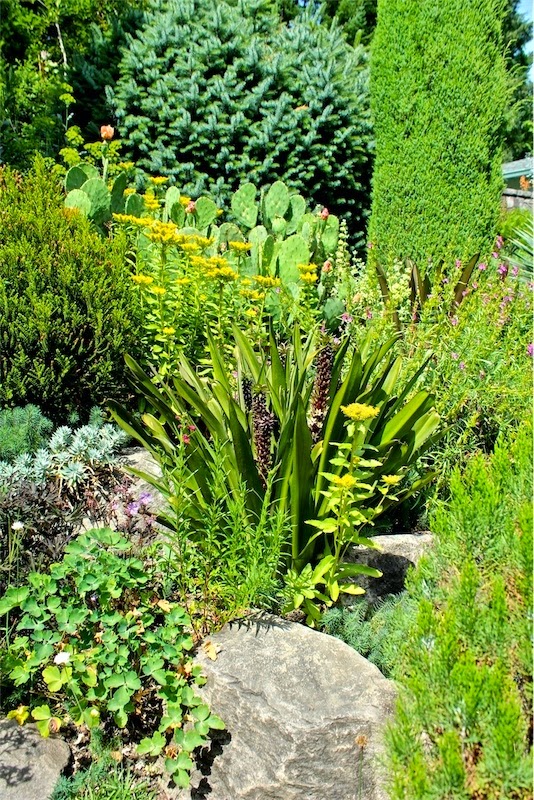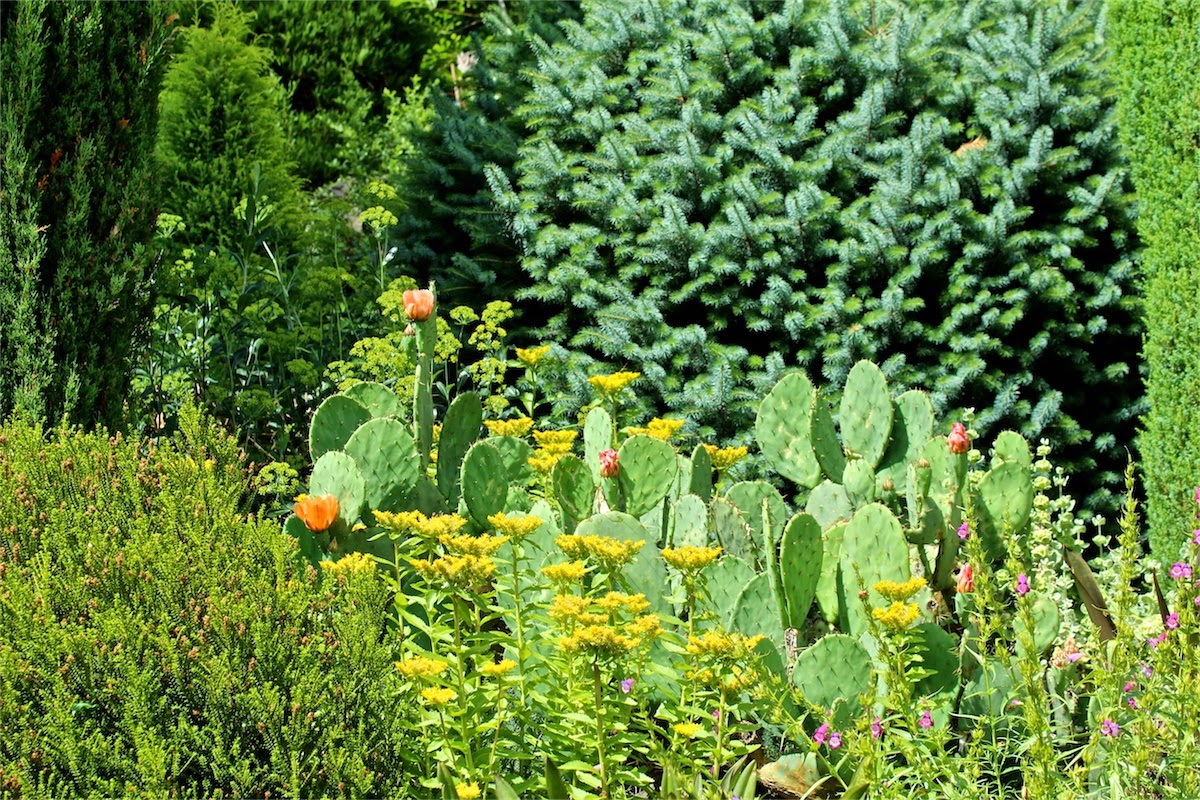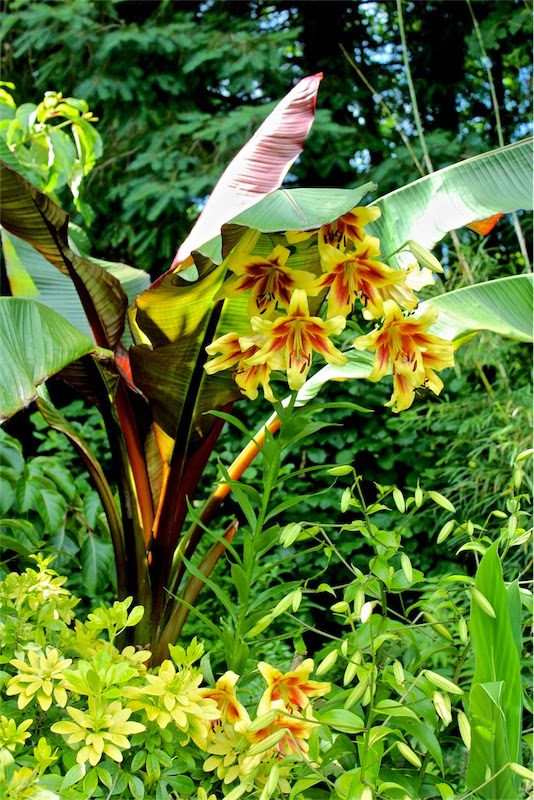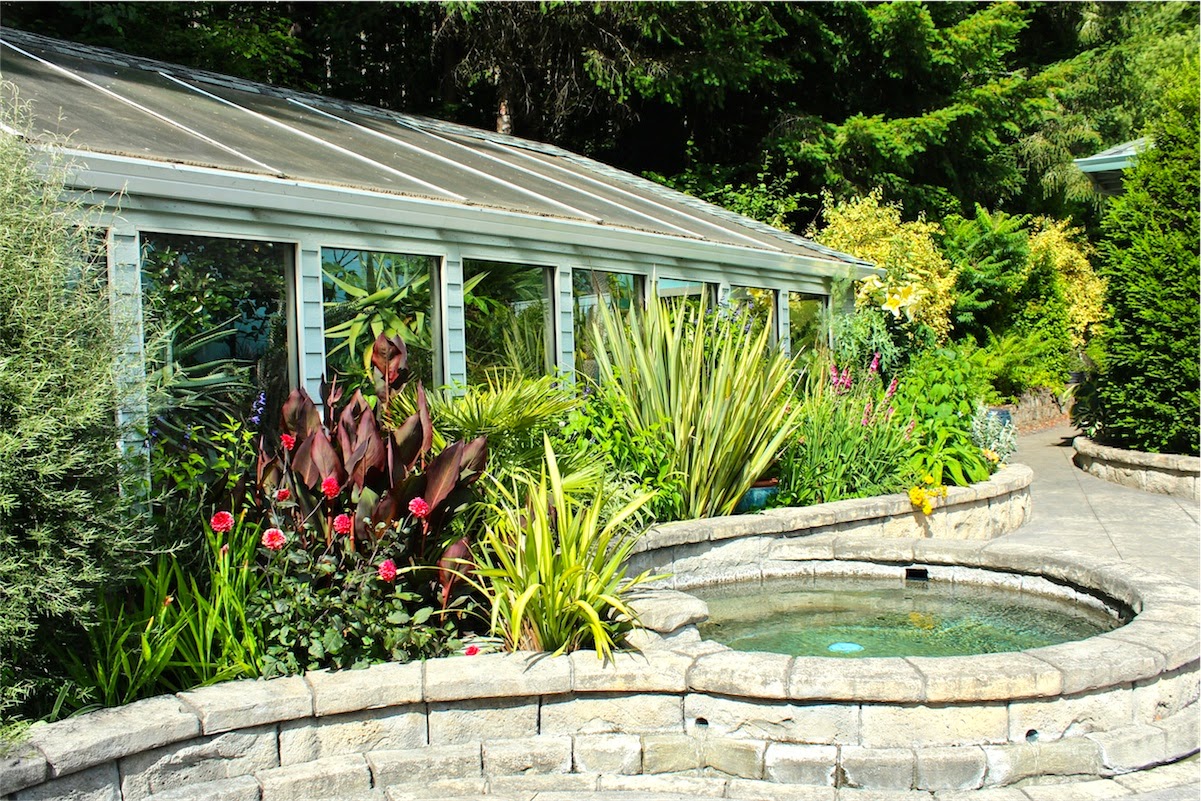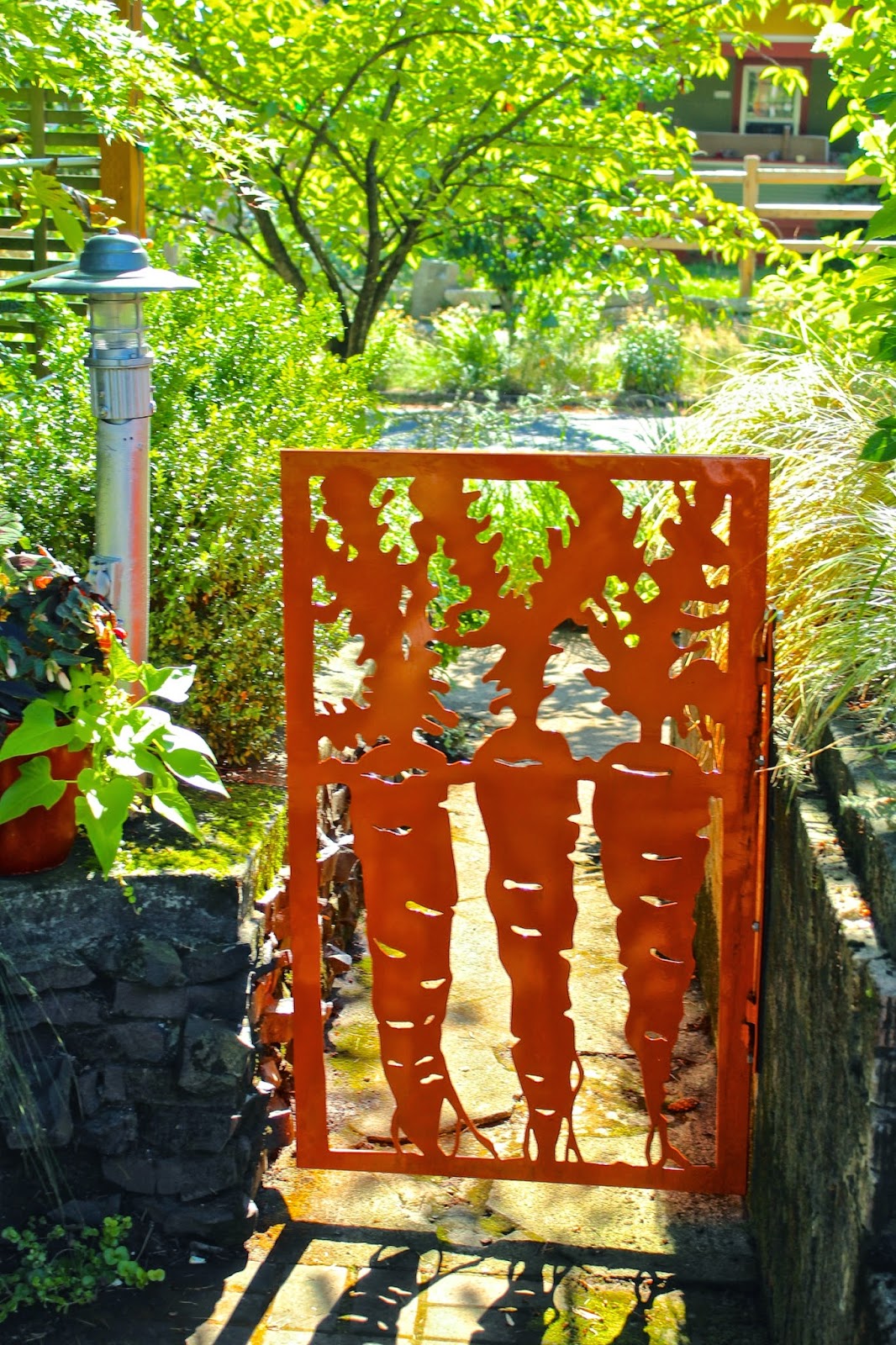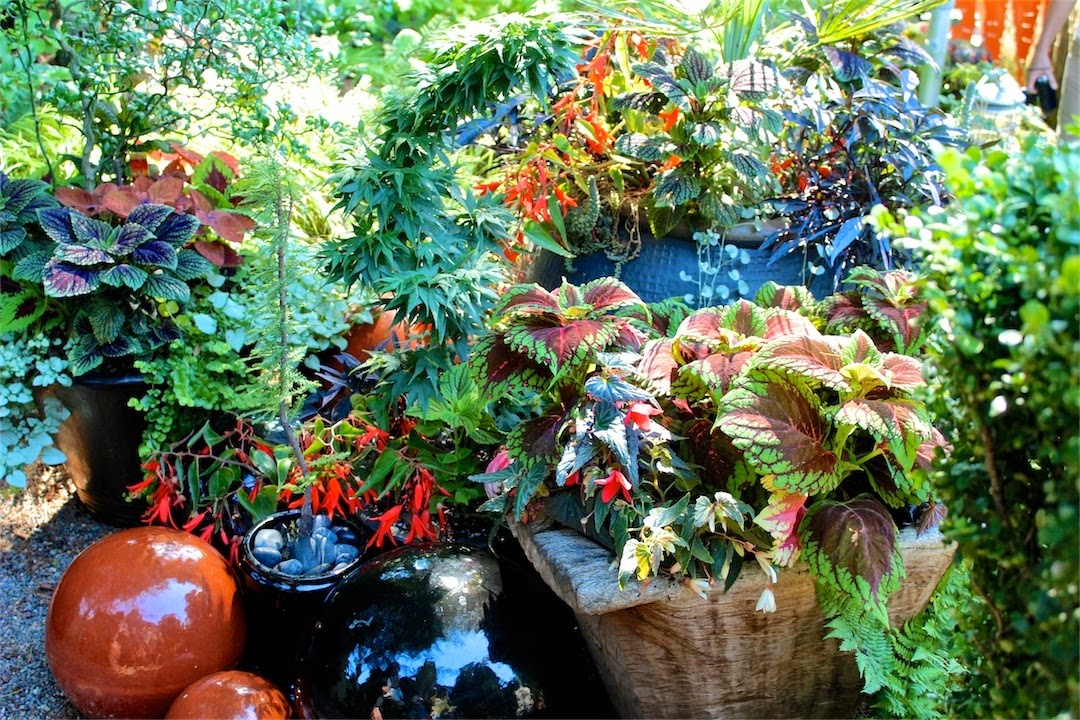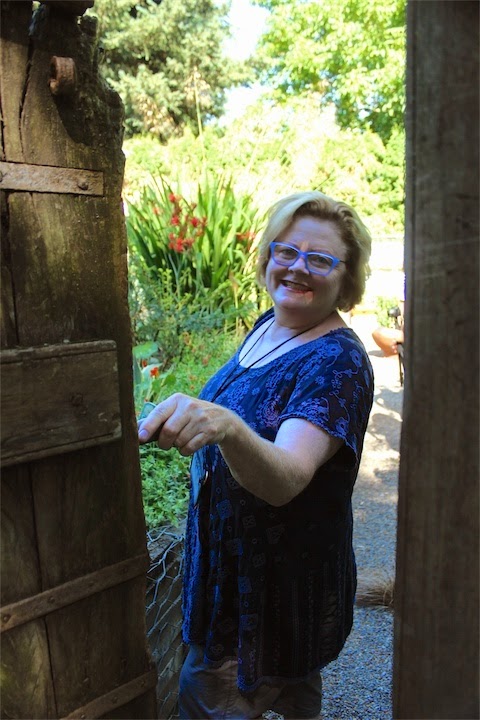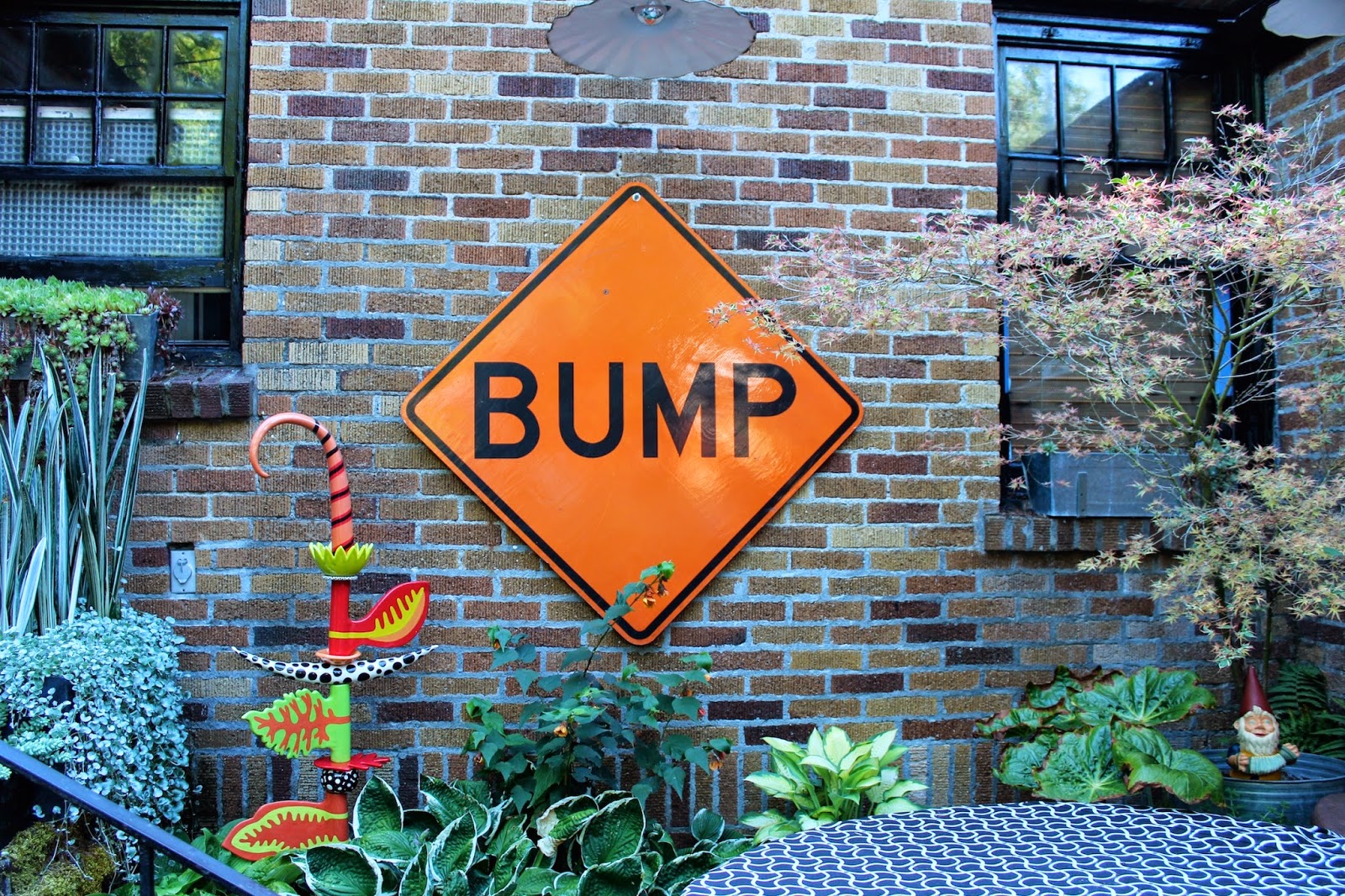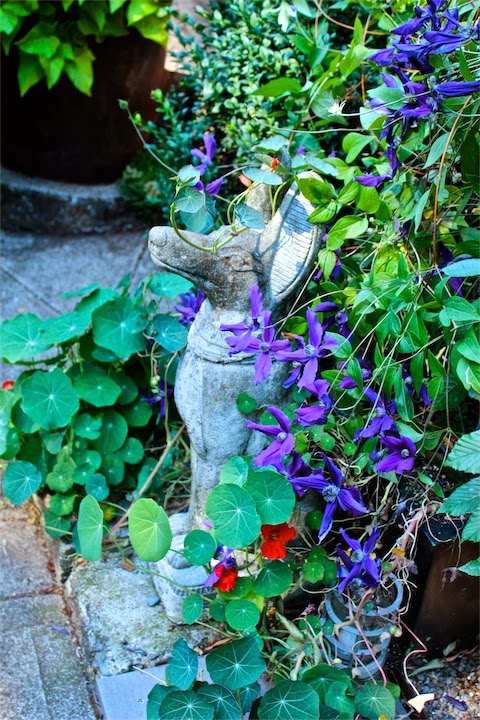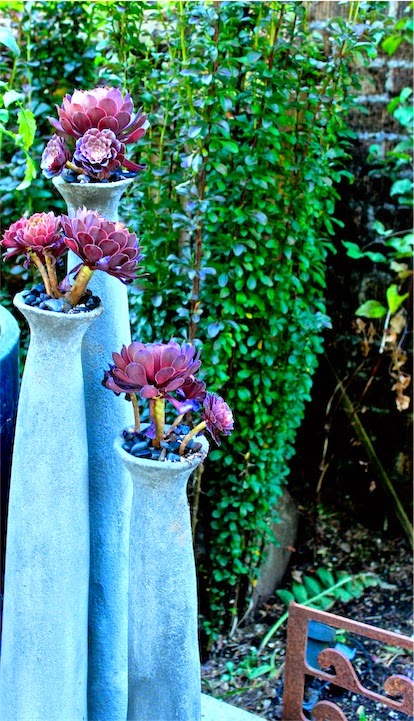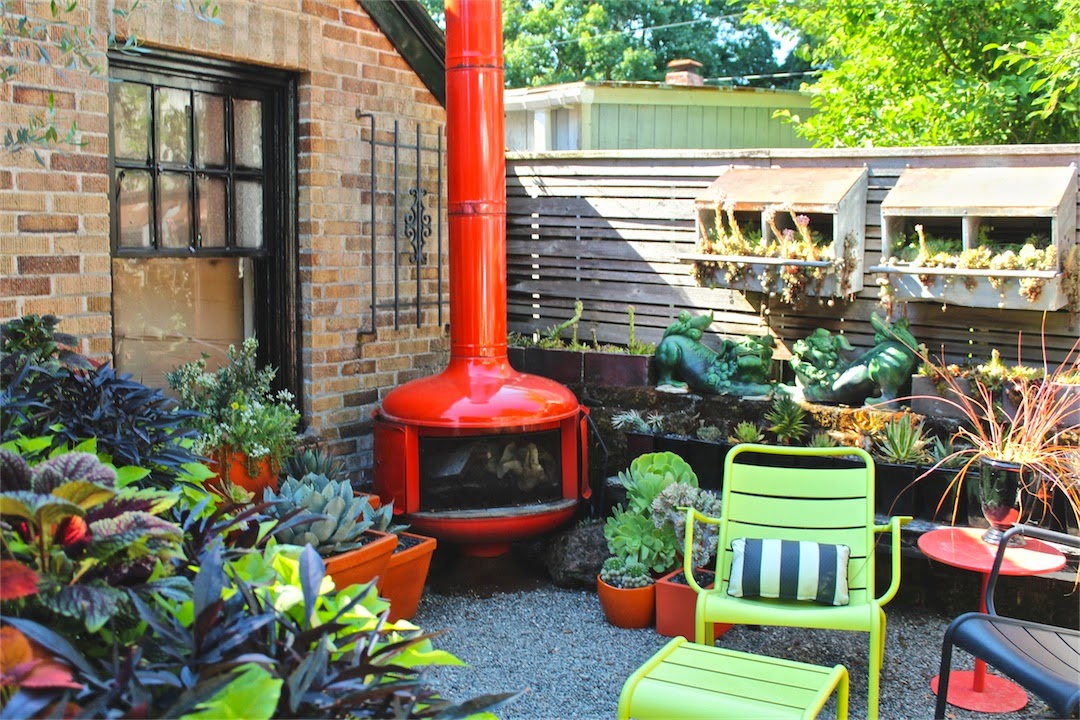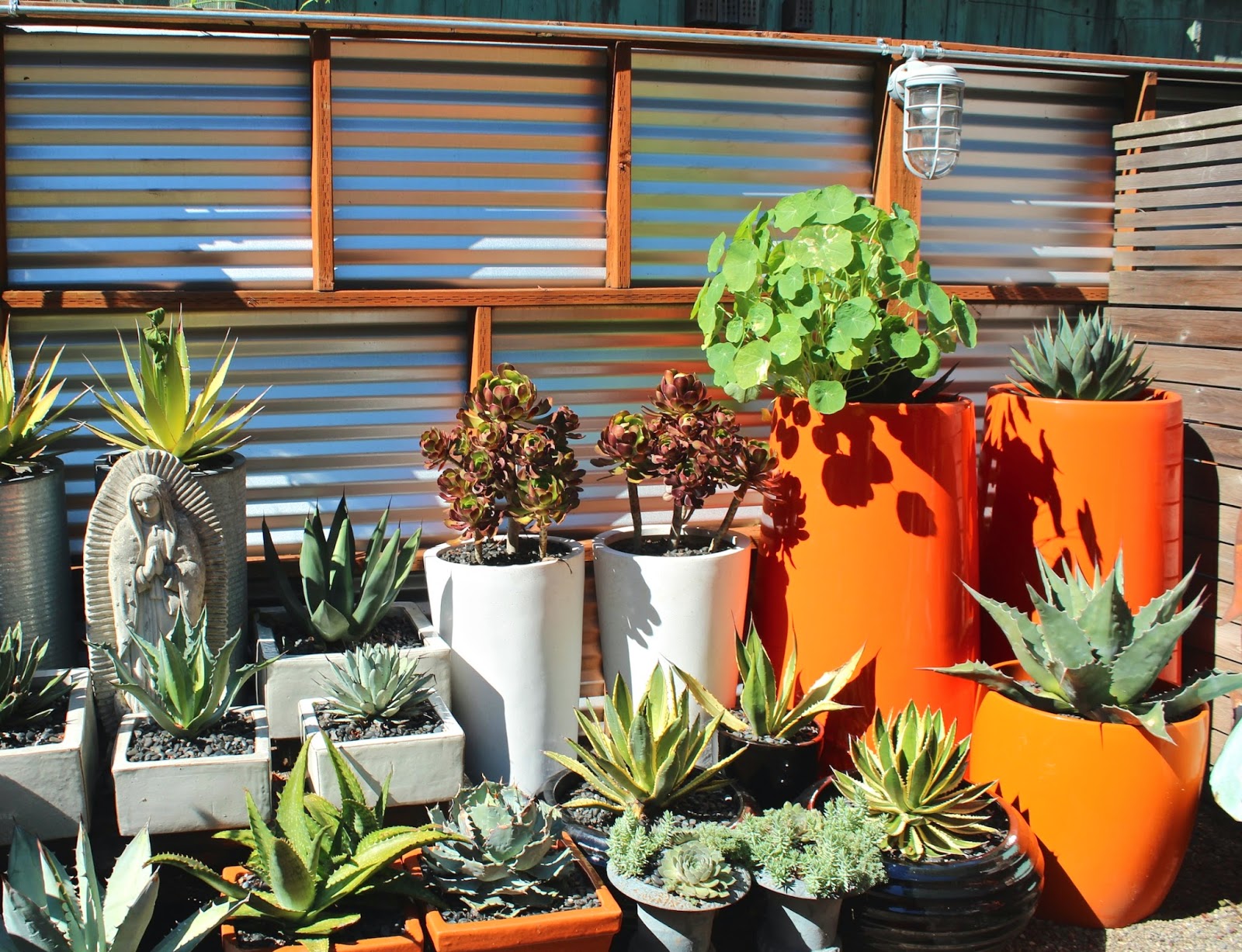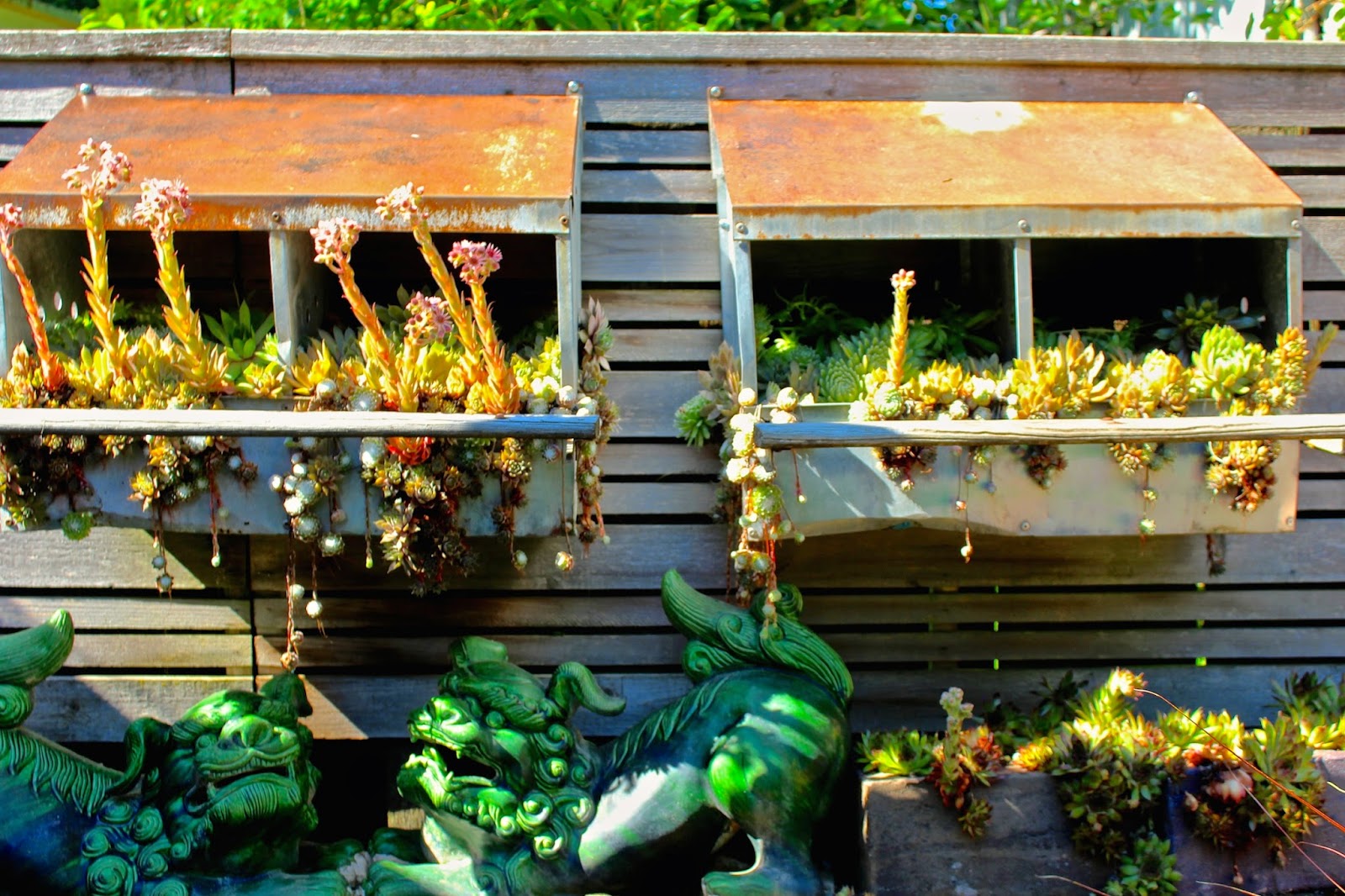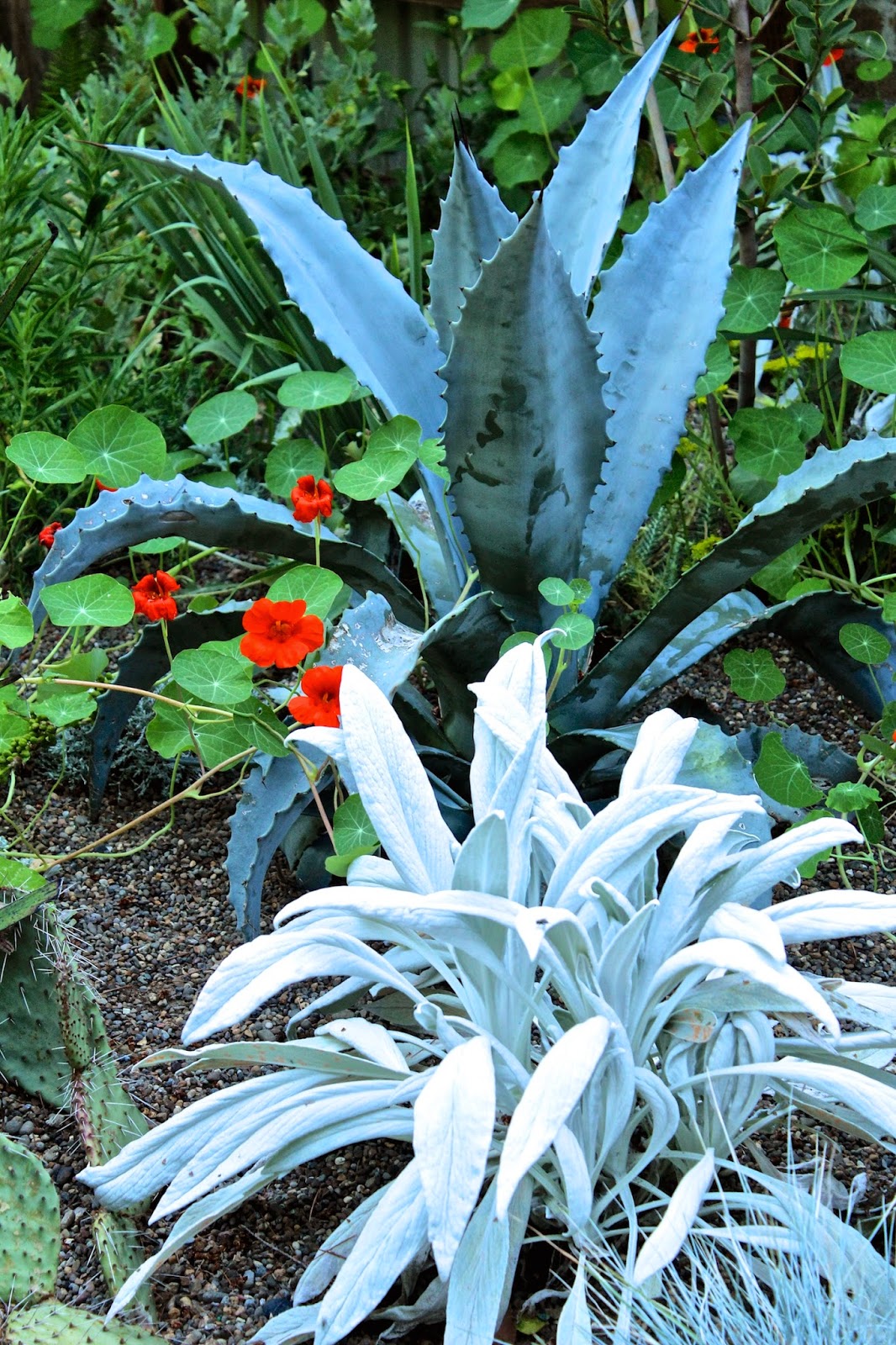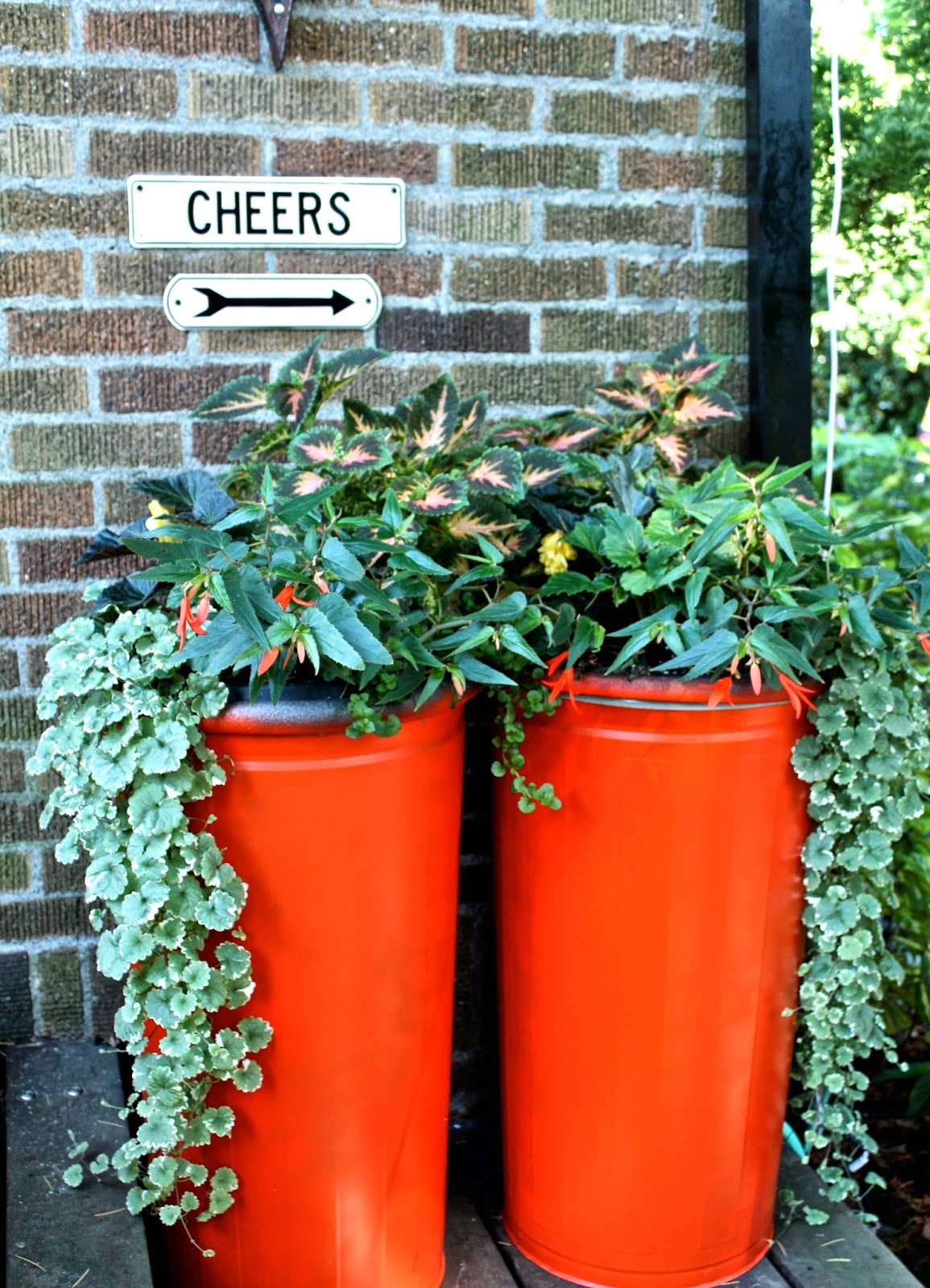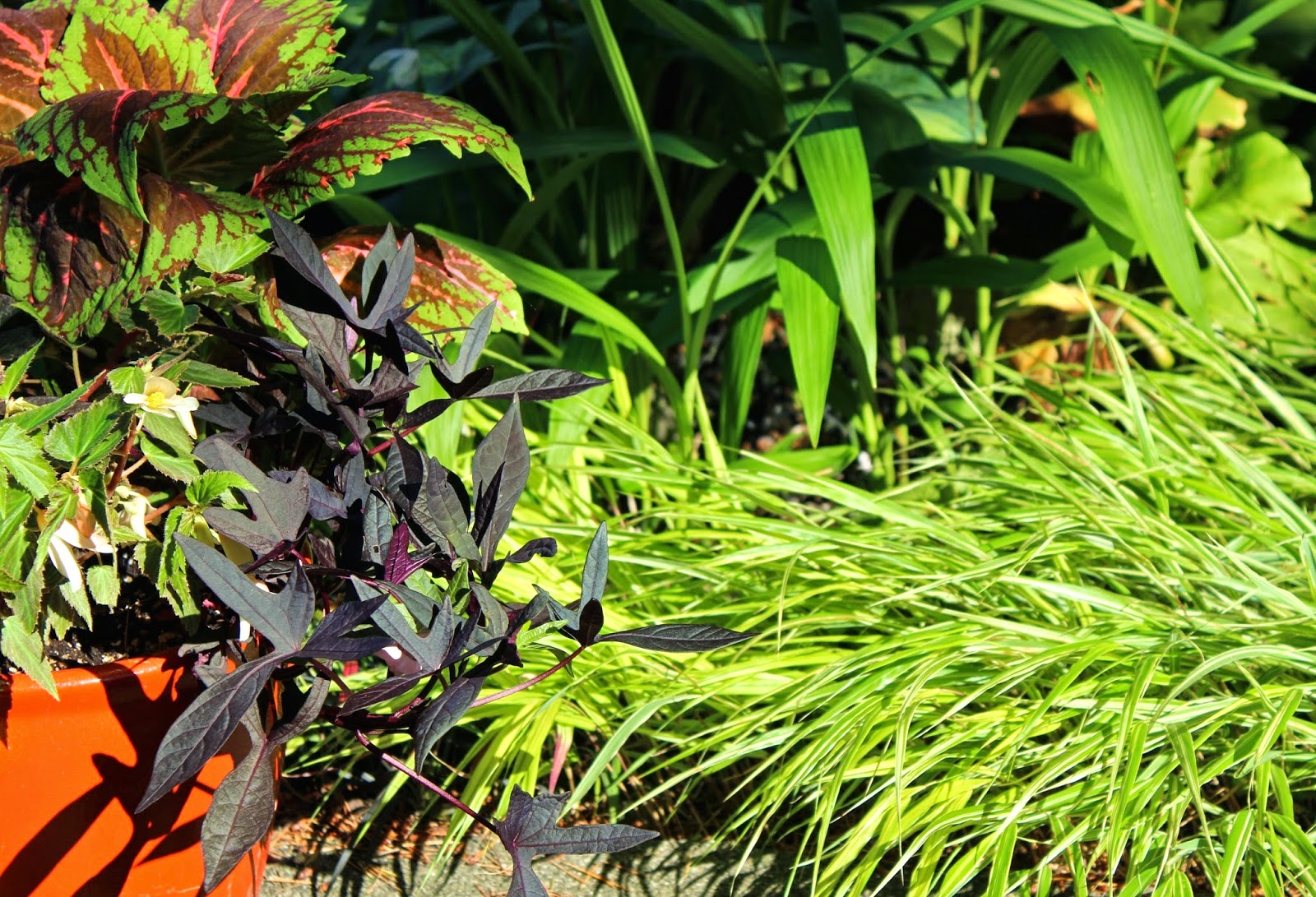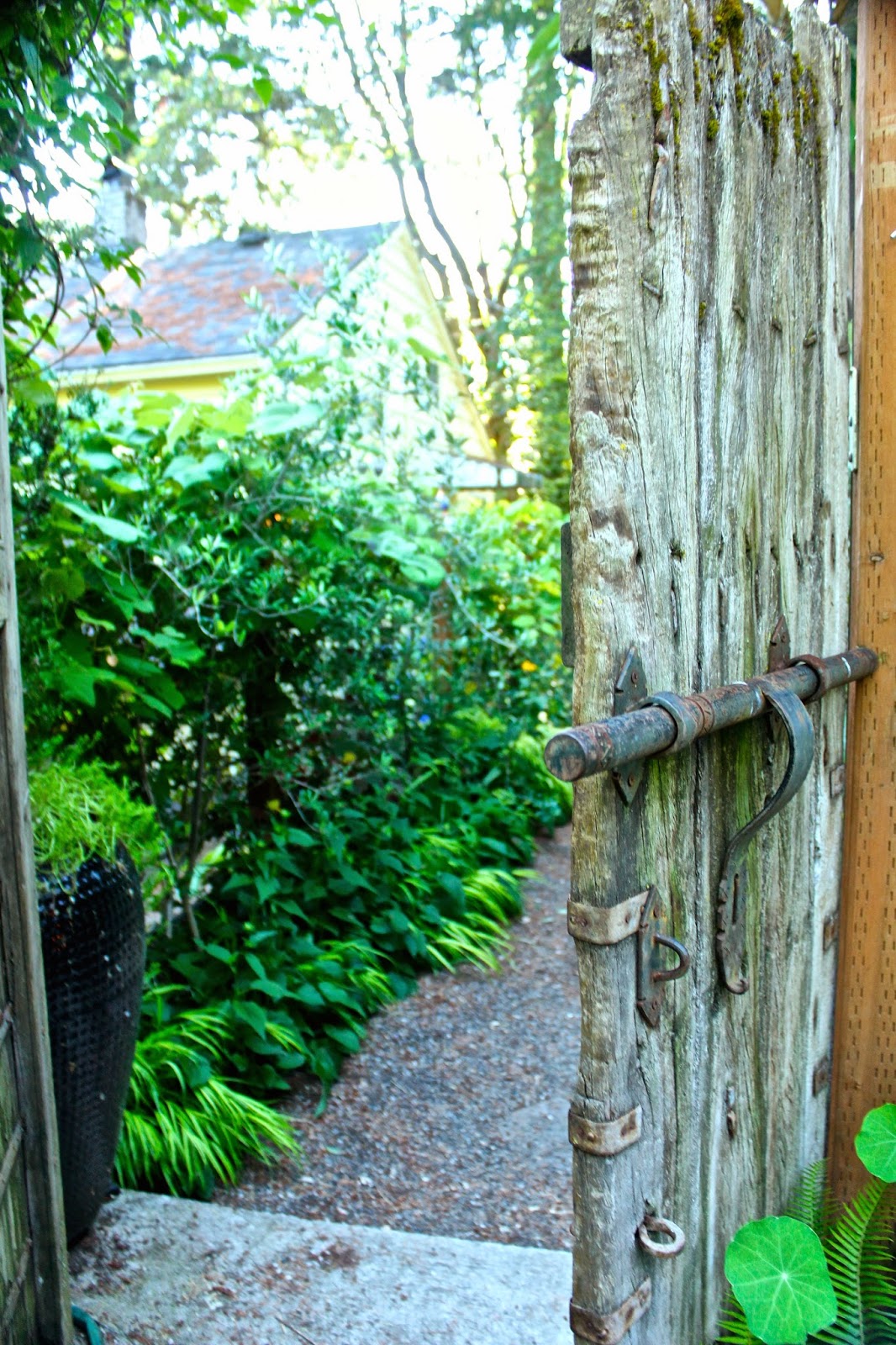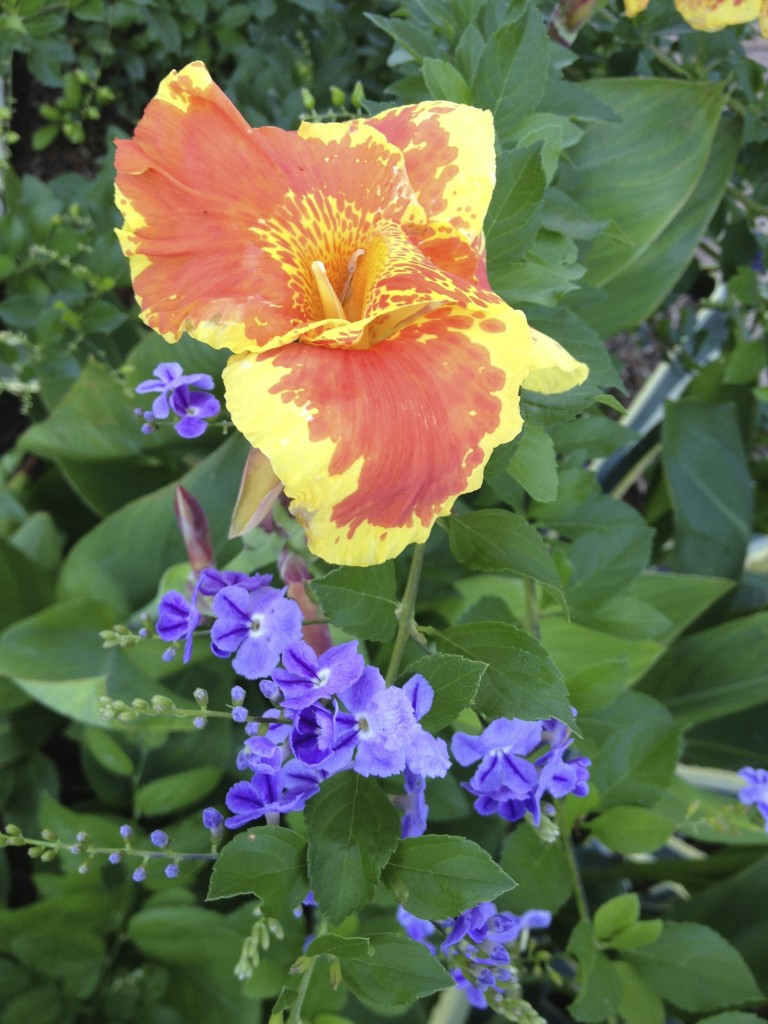Dramatic Danger Garden makes a point to welcome visitors from Portland Garden Bloggers Fling
The Portland Garden Bloggers Fling this summer delivered on every level. I love visiting gardens all around the country and getting to know so many of the garden bloggers that I follow online.
Learning about new plants from different zones is sometimes a double-edged sword. After falling love with them, I realize they are not appropriate for my garden, and I’m forced to walk away from them at local nurseries because they don’t make the survivability cut for my suitcase.
But not so in Danger Garden‘s amazing landscape. Filled with agaves and yuccas and cacti that will not only grow but thrive in my Central Texas garden, it was dangerous indeed. The danger – that I will come home inspired to search for many of the fascinating plants in her garden.
Garden bloggers prepare for the big tour – cameras at the ready!
Succulents like these like plenty of drainage — pea gravel and decomposed granite make excellent growing mediums for them.
We were welcomed to the garden with refreshing cold drinks and snacks. A blistering hot day (for Portland and an outdoor garden tour) seemed appropriate as we ooohed and aaahed over Danger Garden’s heat-loving plants.
With space at a premium in this garden, container vegetables lined the driveway.
Pavers and bricks and patio stones created unique design angles to lead visitors through the garden and provide contrast to neighboring plants.
Leaving no area empty, trendy and perky hanging planters were scattered throughout the garden.
A riot of color and form, many non-succulent plants provided a softer foil to the more dangerous elements in the garden.
A small square of grass provides a place for the eye to rest while feasting on all the delightful plant specimens that surround it.
Agaves, yuccas and … hostas? Yep – these water and shade-loving plants work side-by-side in this garden.
So many unique succulents to see.
Tucked in the back is a Zen-like covered patio area for relaxing.
These shiny metal planters give height and interest to the sea of succulents.
And pots — pots everywhere. Each and every one different.
With clean lines and a contemporary feel, the patio offers a peaceful respite from the sun.
No empty spaces, here, either…
A unique horizontal fence is flanked in the back corner of the garden by tall plants of every conceivable kind.
Even within a bed, containers showcase specimen plants.
Little pops of color make me smile.
This bed looks like a miniature forest of tiny succulents.
The biggest danger in this garden? Falling in love with the wonderful plants and the delightful design.




